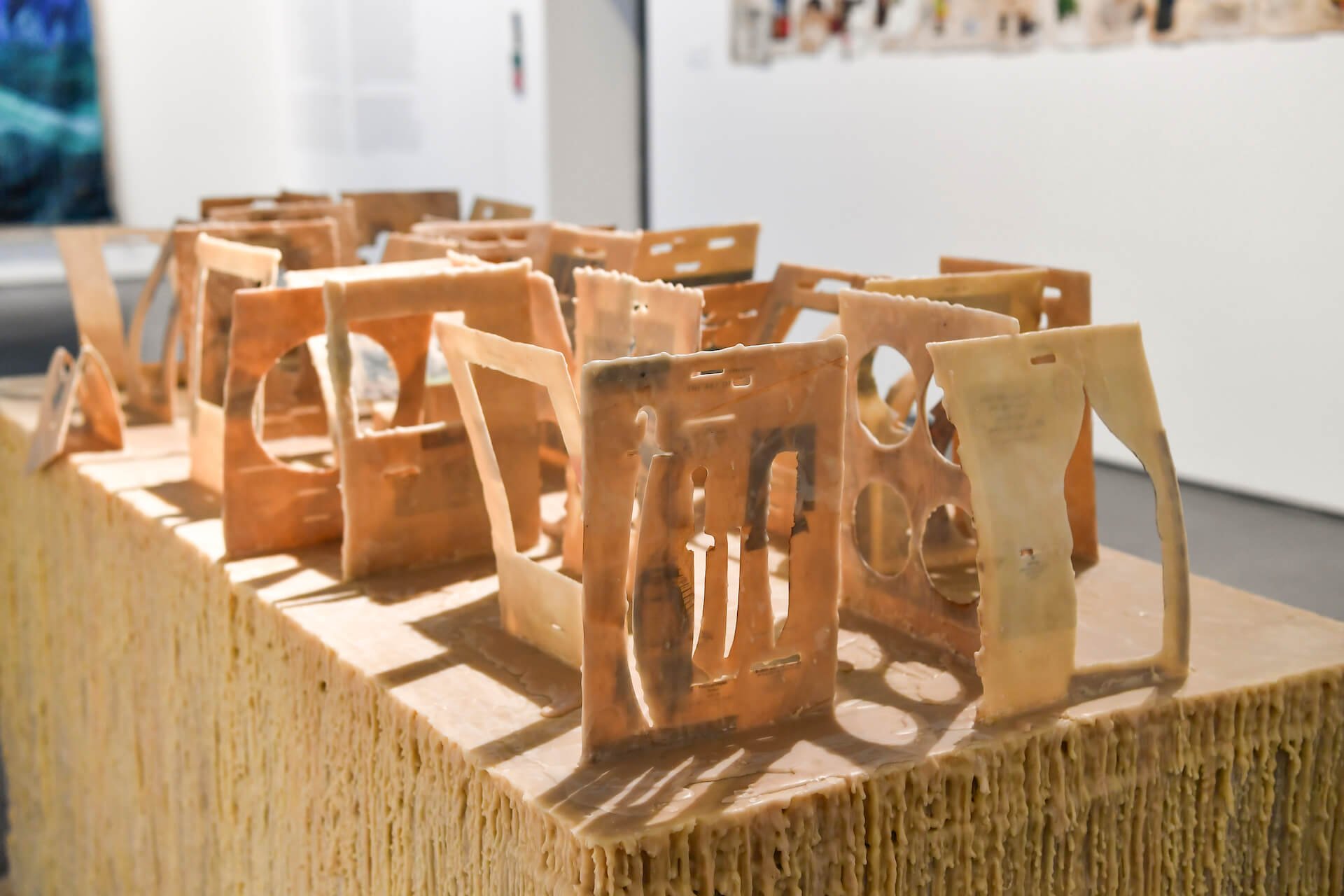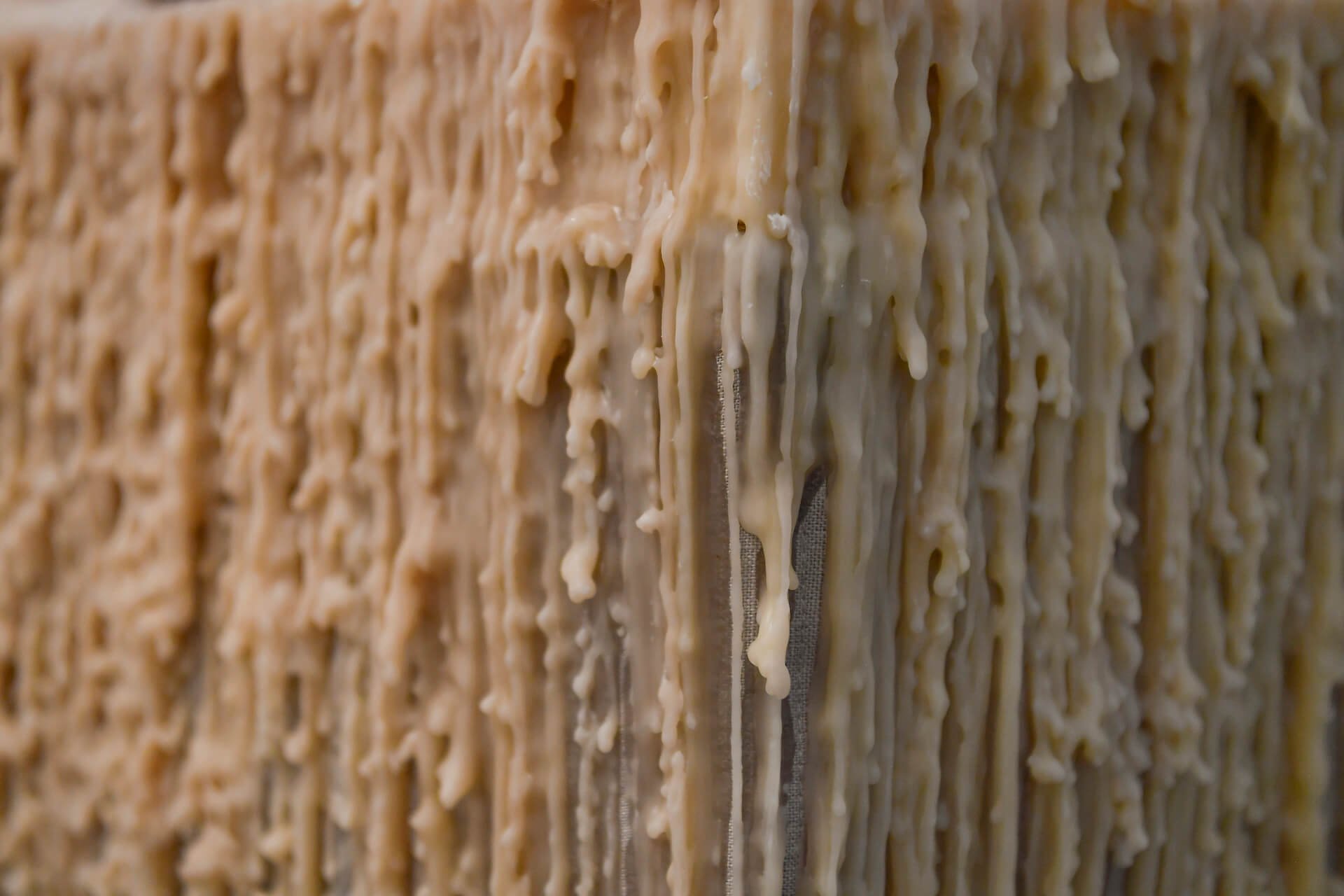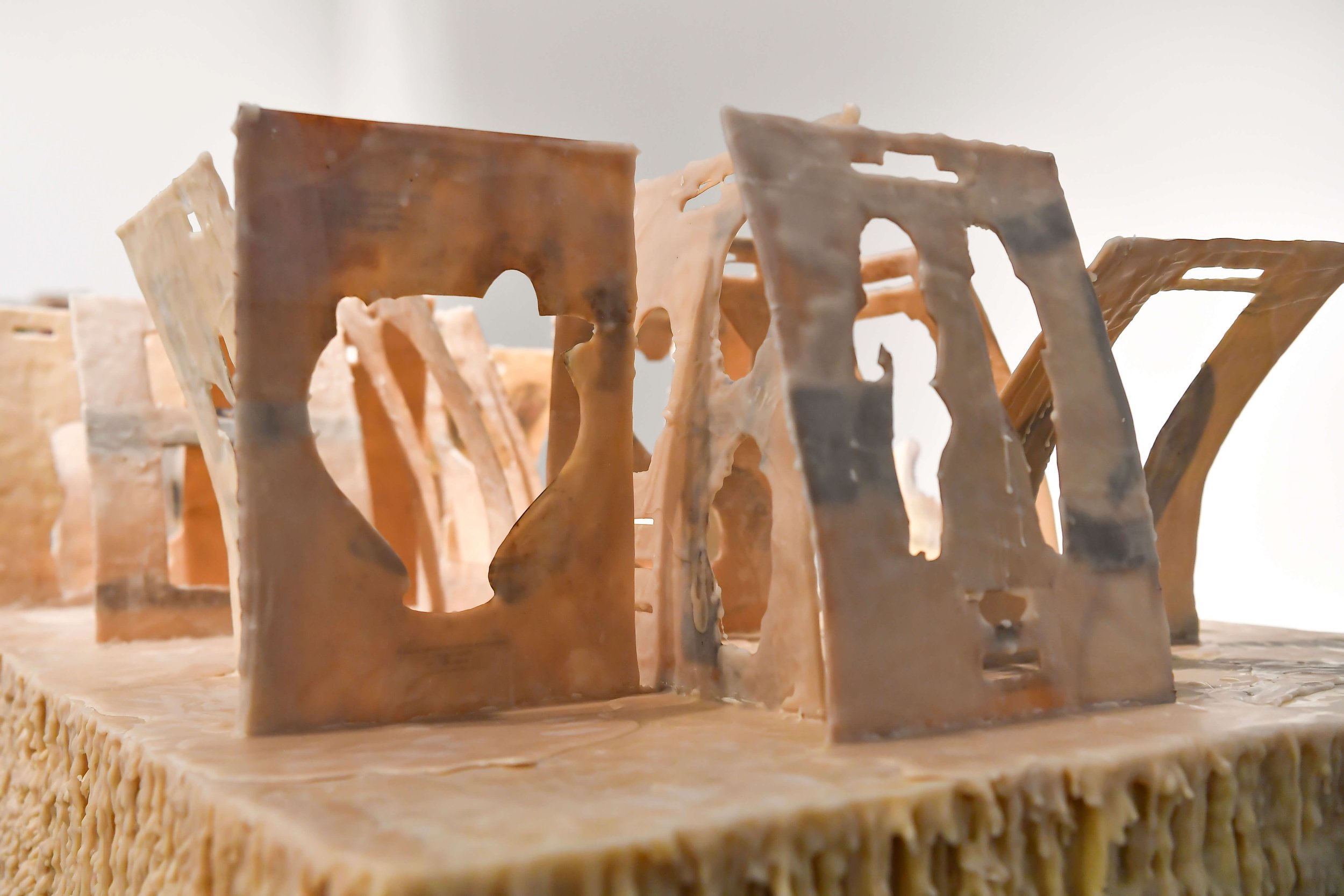Encounter Museum, 2023
What happens when an object, text, or category is "out of place" because it does not conform to the museum's organizational principles? Inspired by art historian Aby Warburg's "Mnemosyne Atlas" (named after the Greek goddess of memory), Encounter Museum reinterprets incomplete and ambiguous narratives in the Louvre Abu Dhabi's collection, using its masterpieces catalog to build them in an unpredictable order, likeness, hierarchy, and logic. As operating fields can be rearranged, combined, or overlapped, the work constantly re-edits, reviews, and assembles images as "lines of flight" ( Deleuze), opening up in unexpected ways and creating multiple narratives. These works examine the archive and its manifestations in art and history, exploring the relationships between authenticity, appropriation, and fragility. The project also refers to Brazilian poet Oswald de Andrade's Anthropophagic Manifesto and the artwork of his colleague Tarsila do Amaral. Within their project, cannibalism is a metaphor for criticizing and rejecting European supremacy by devouring and consuming all influences to create something new. Destruction, appropriation, and creation of new ideas are at the core of classifying, collecting, and interpreting art. Encounter Museum reflects on how interactions with historical memory and narratives embedded in images can enable us to become agents of change rather than simple observers.
As operating fields can be rearranged, combined, or overlapped, the work constantly re-edits, reviews, and assembles images as "lines of flight"(Deleuze), opening up in unexpected ways and creating multiple narratives.
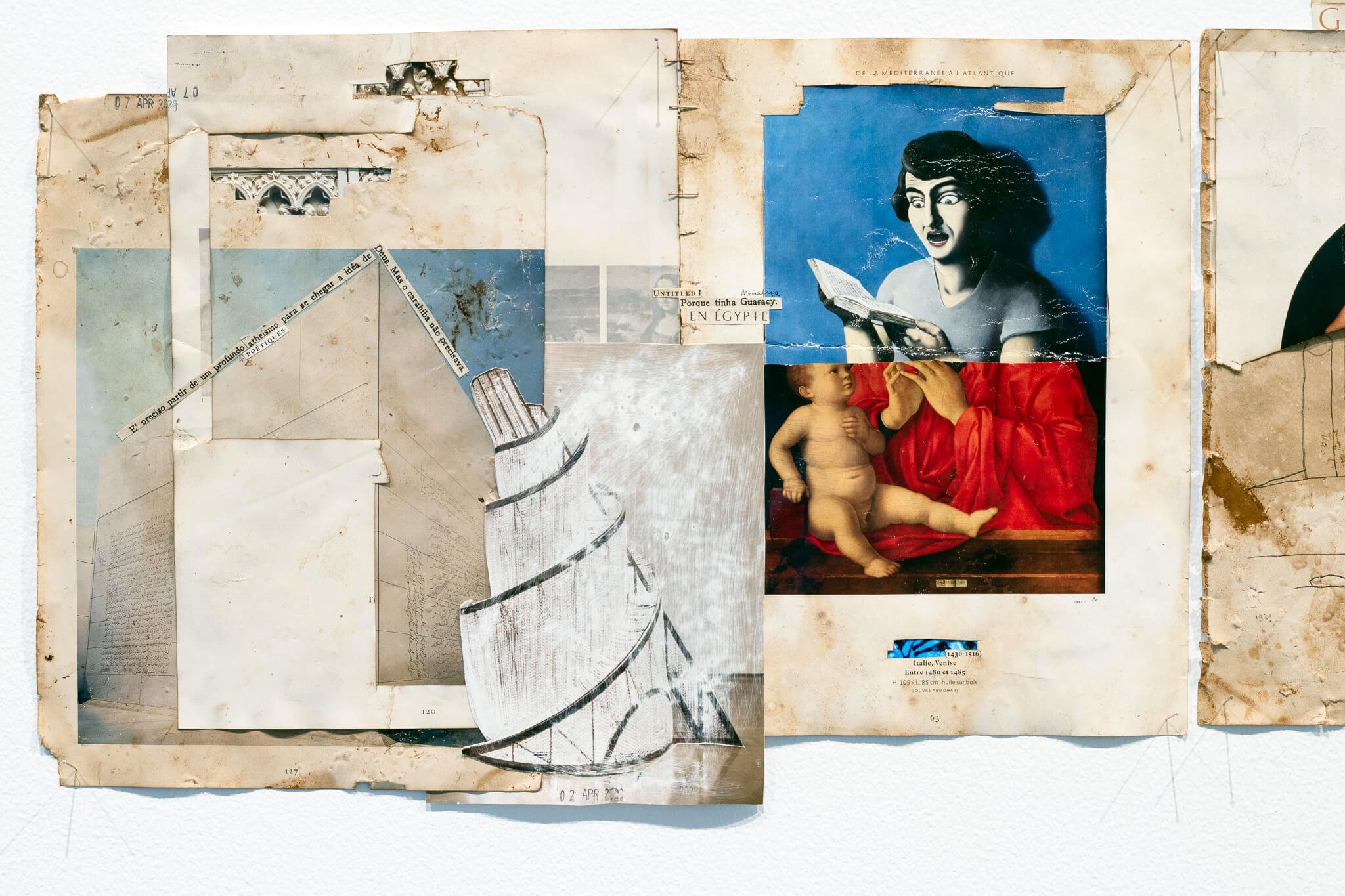
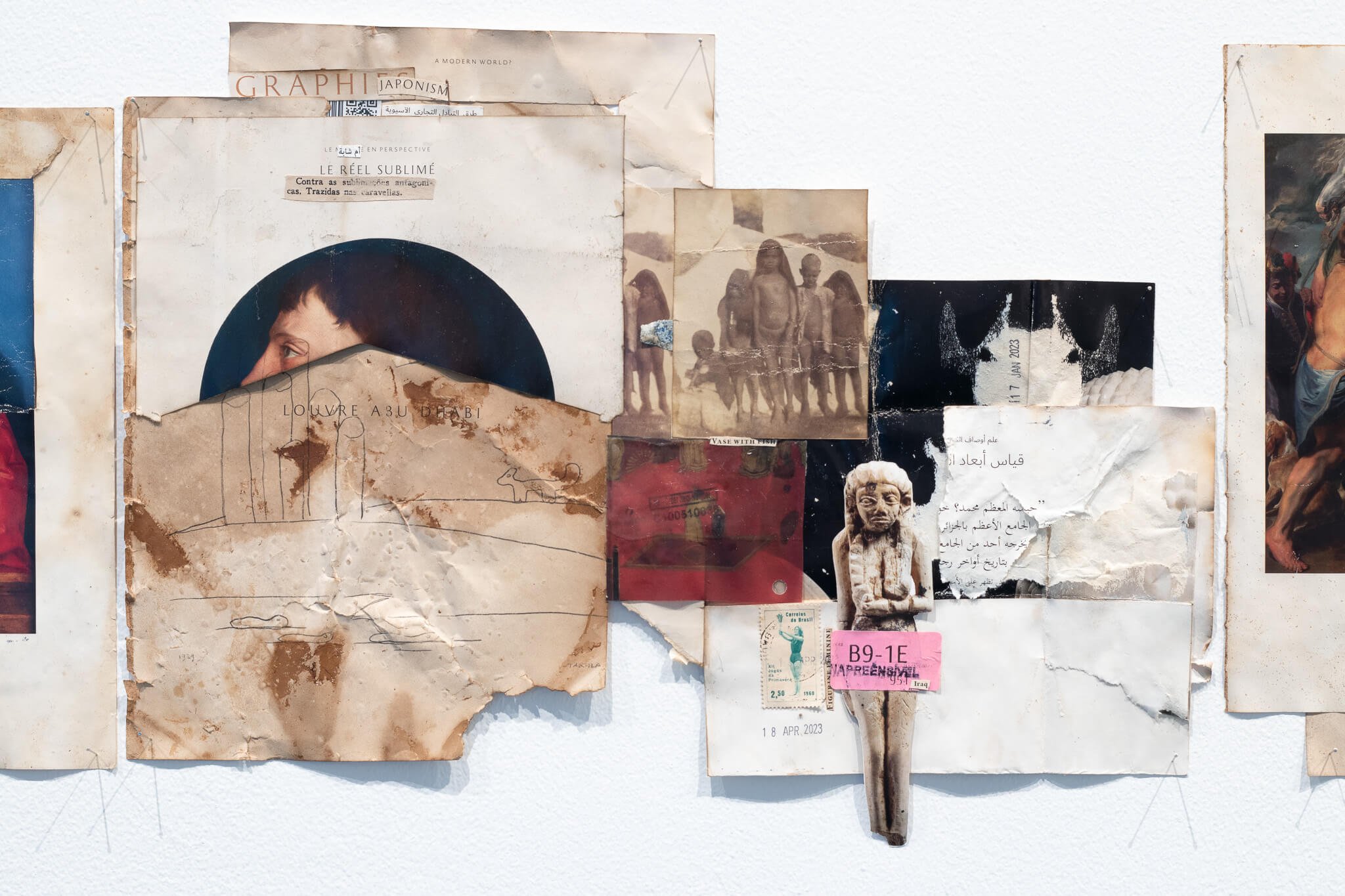
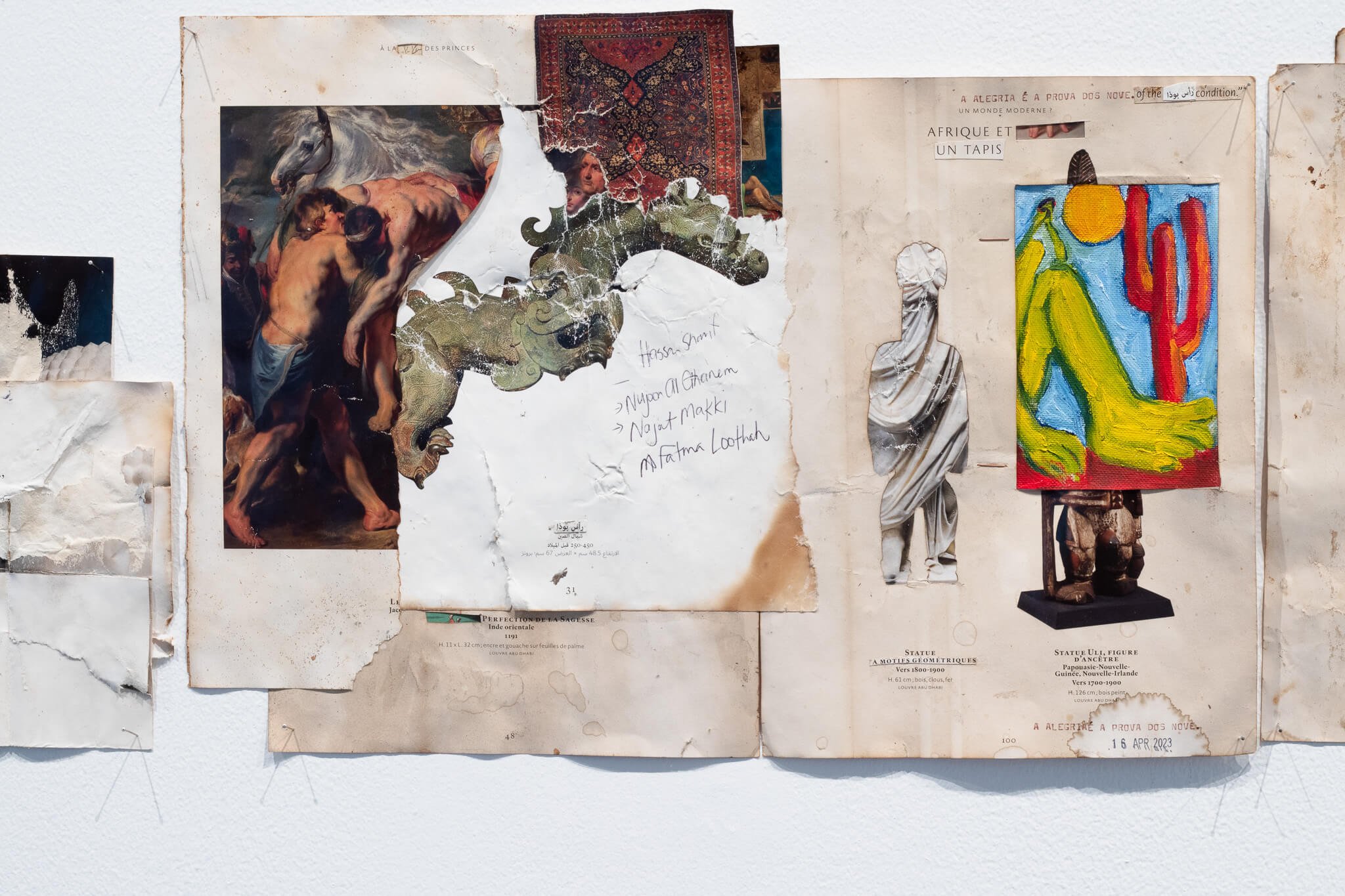

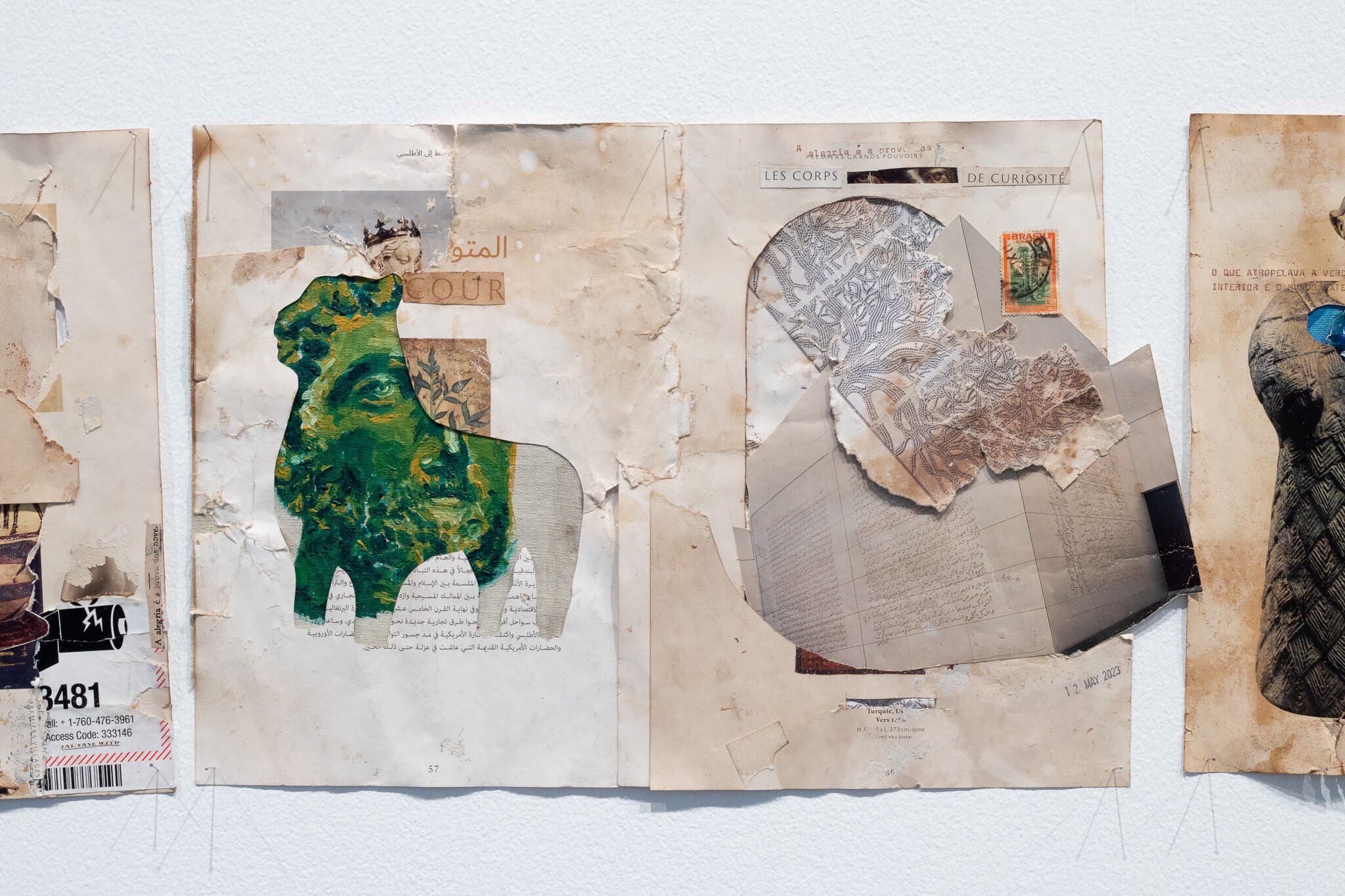
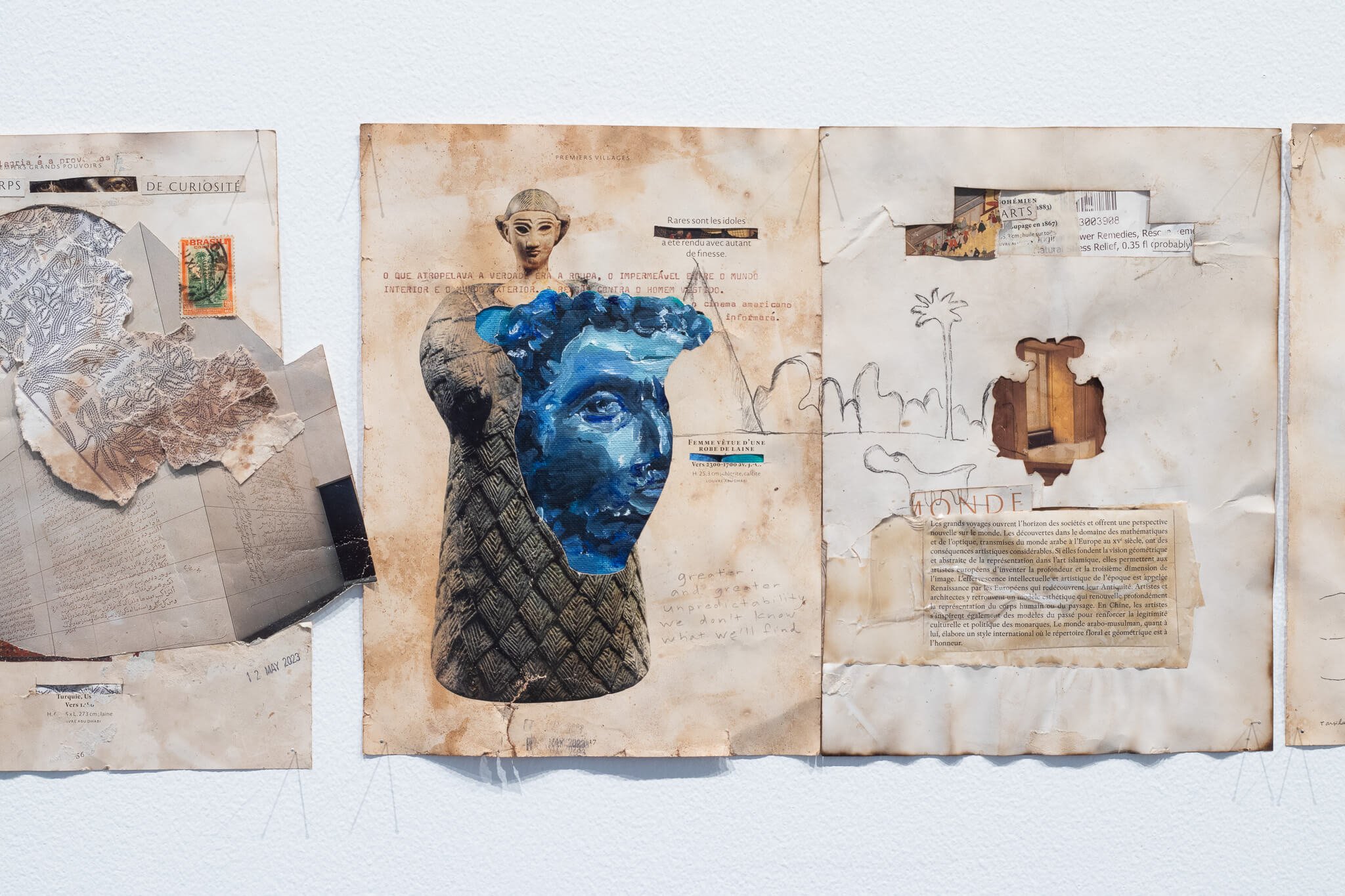
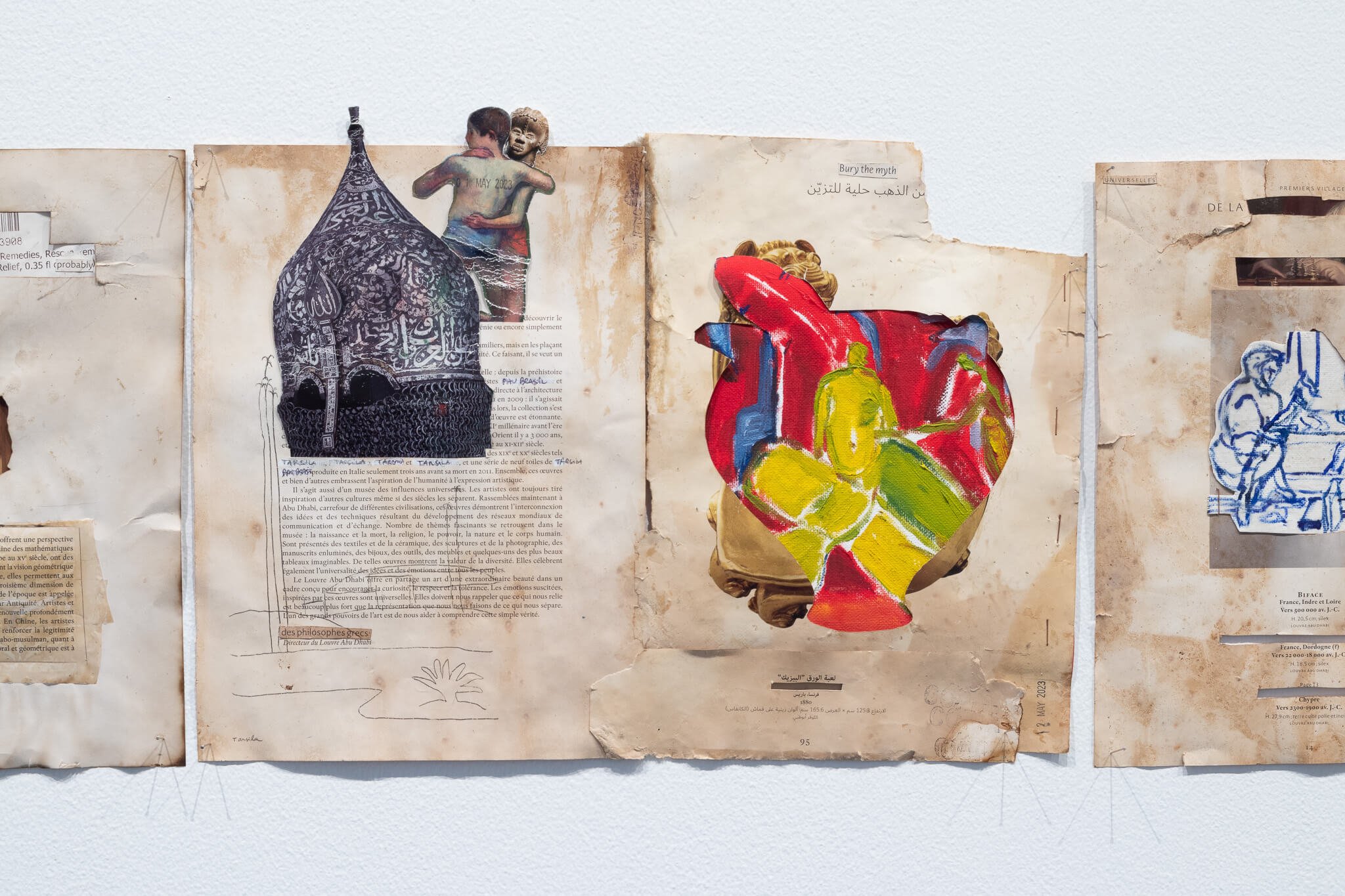
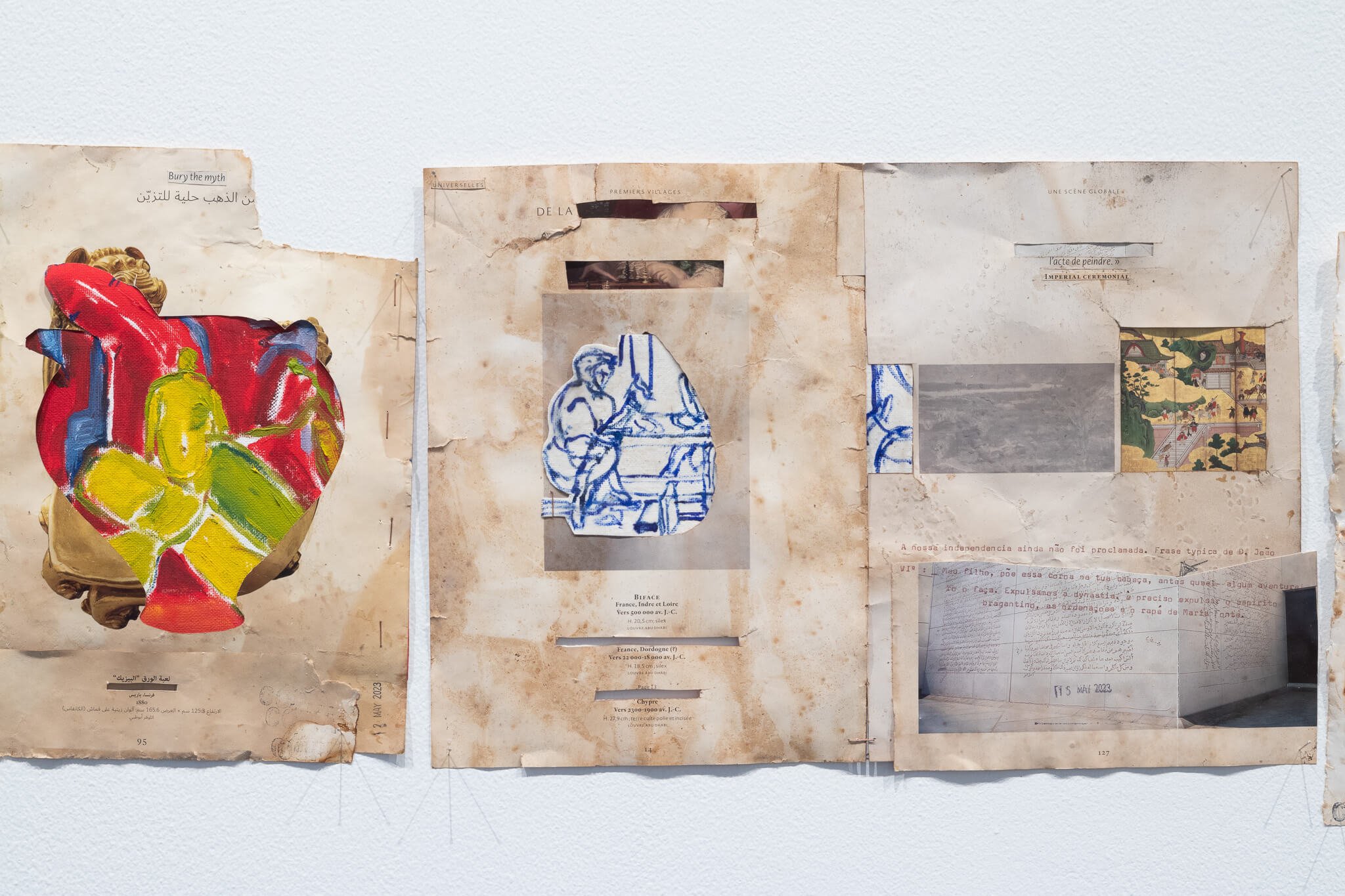
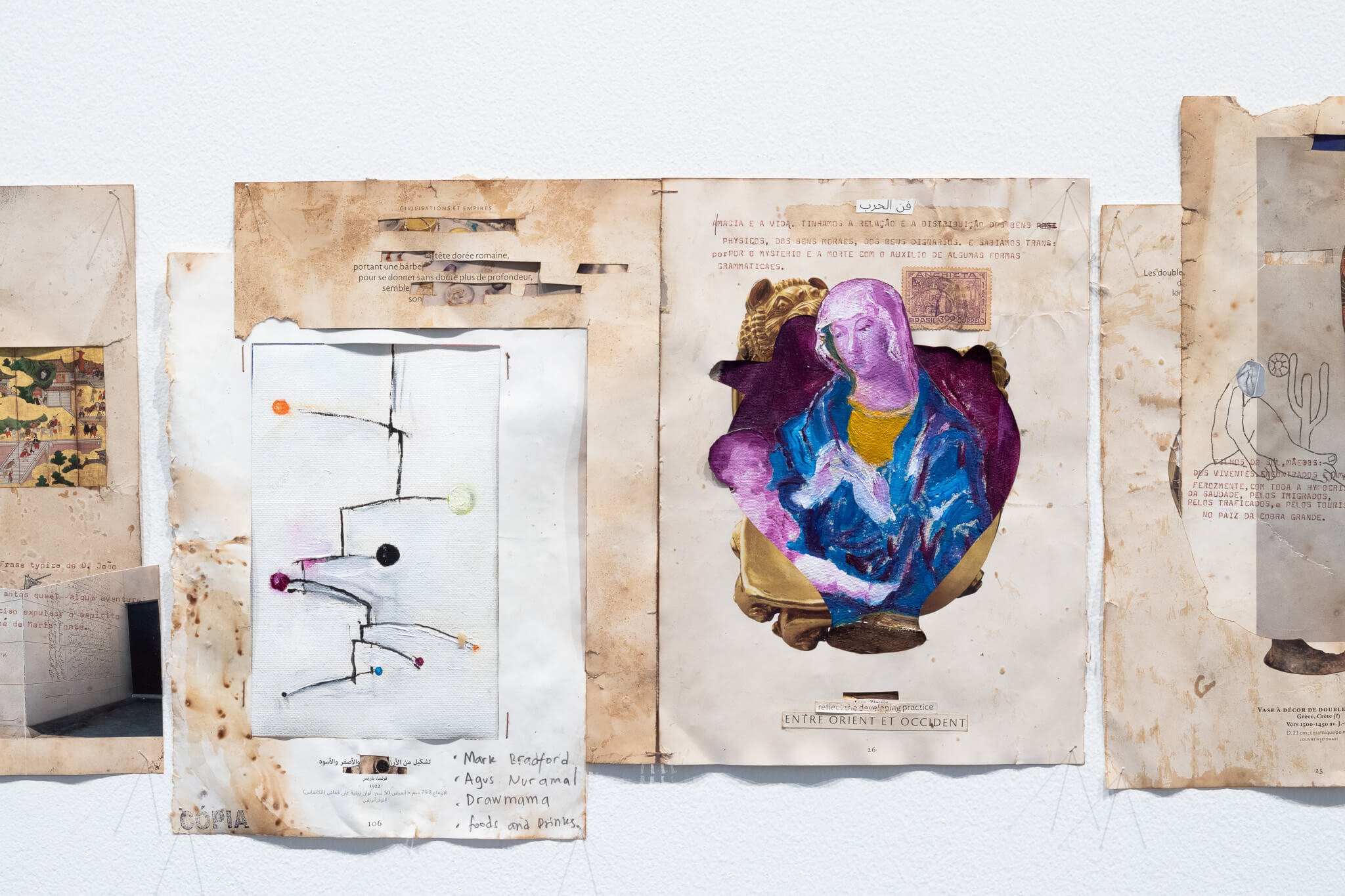
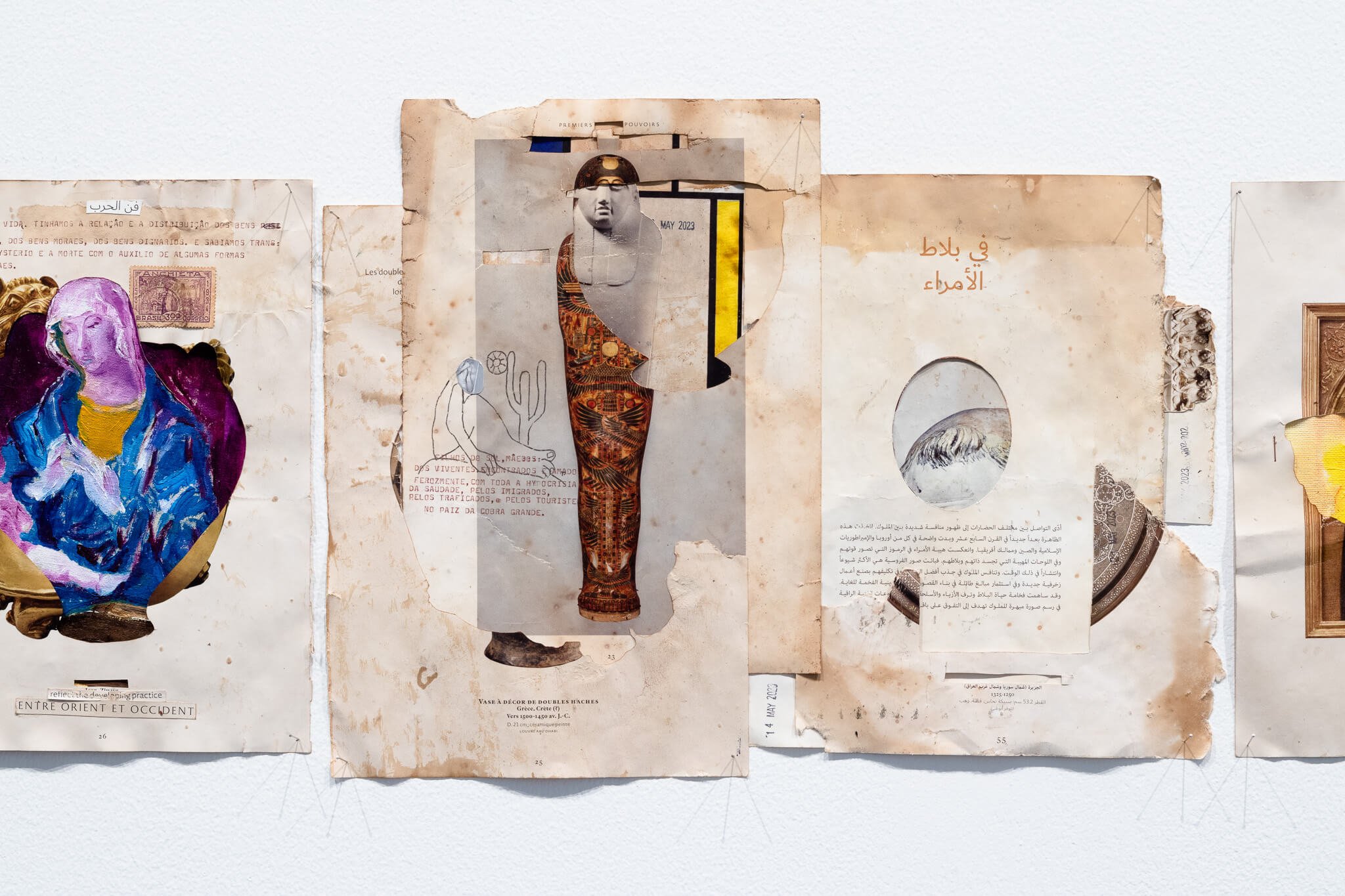

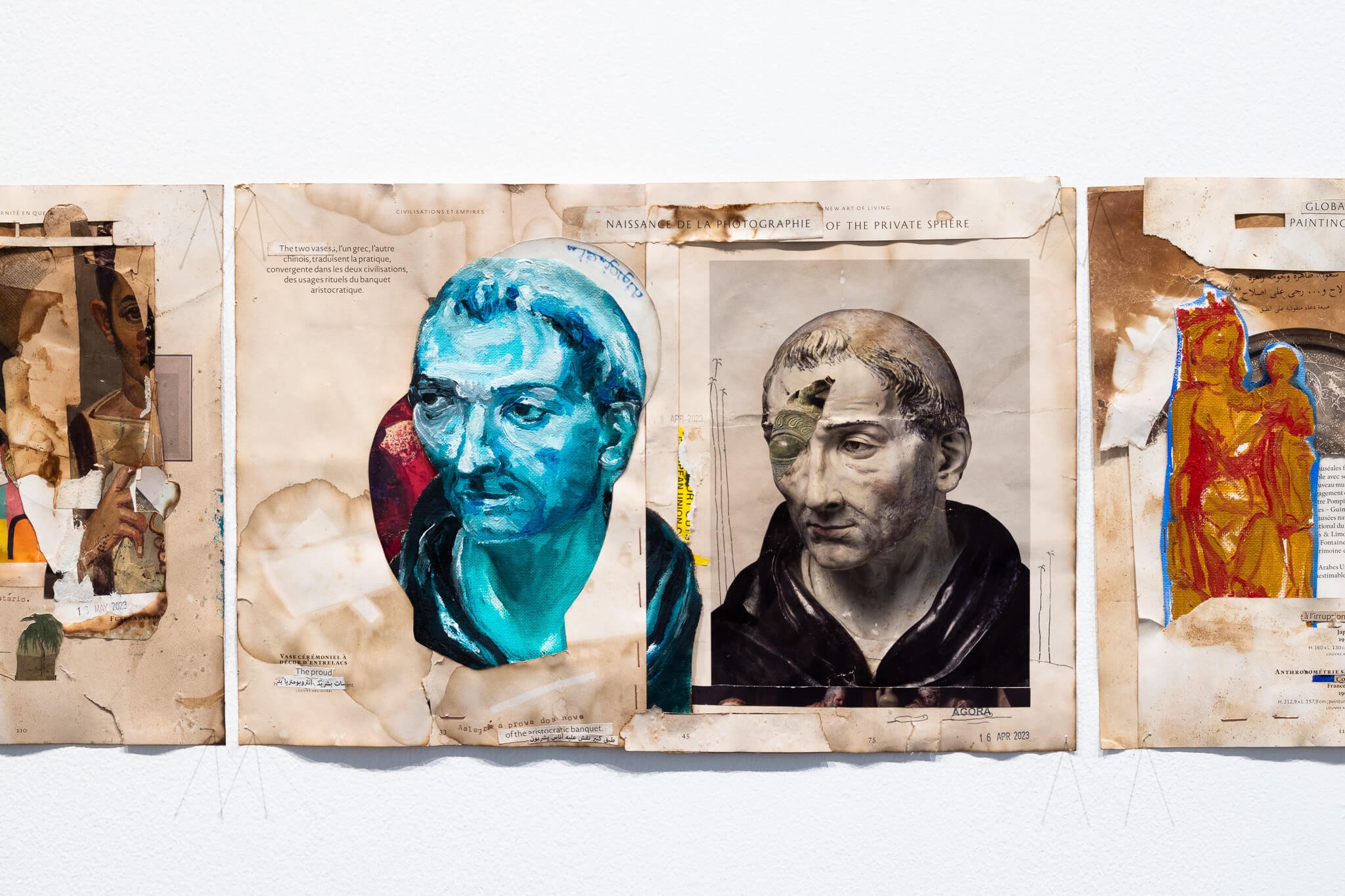
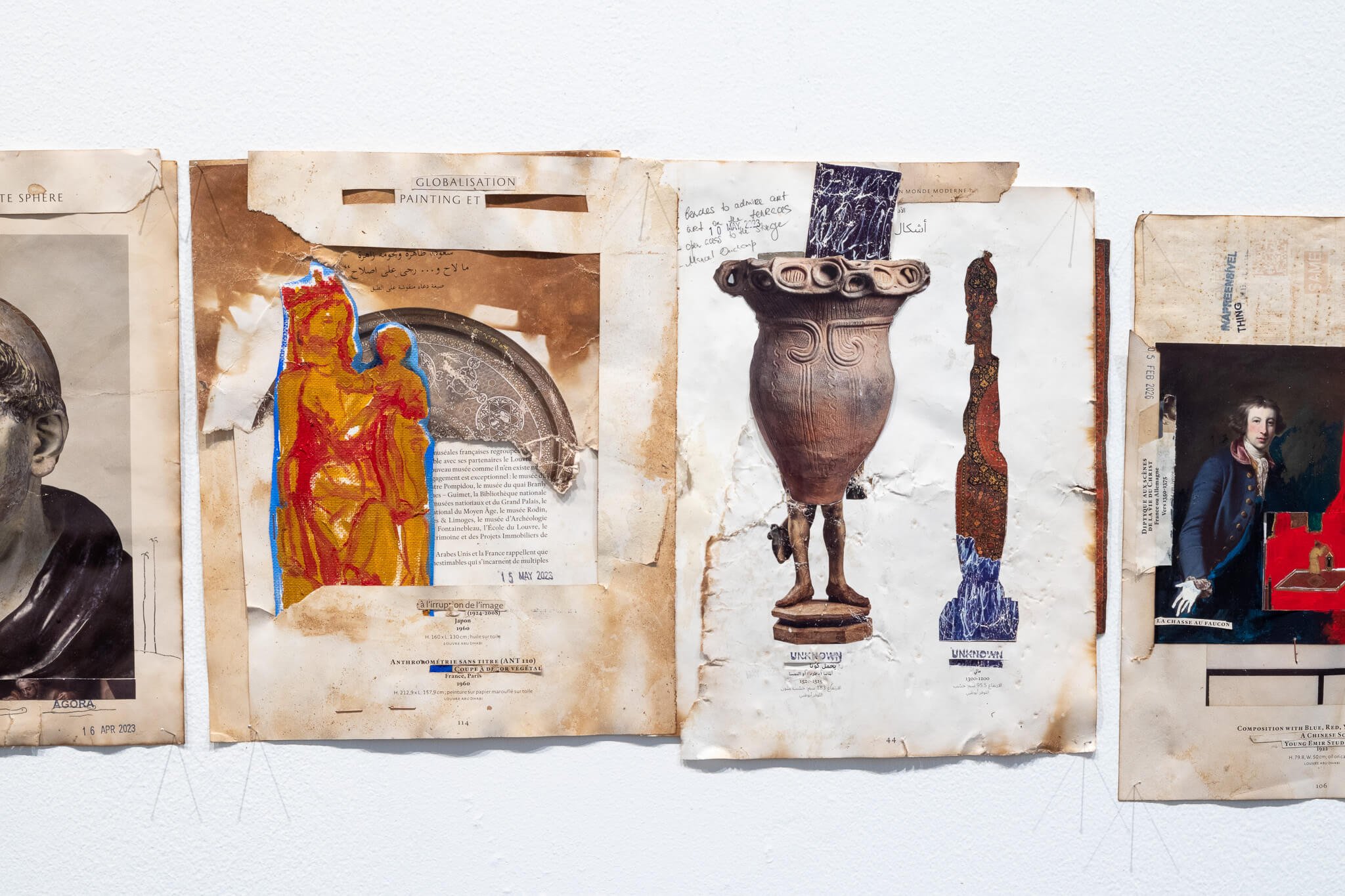
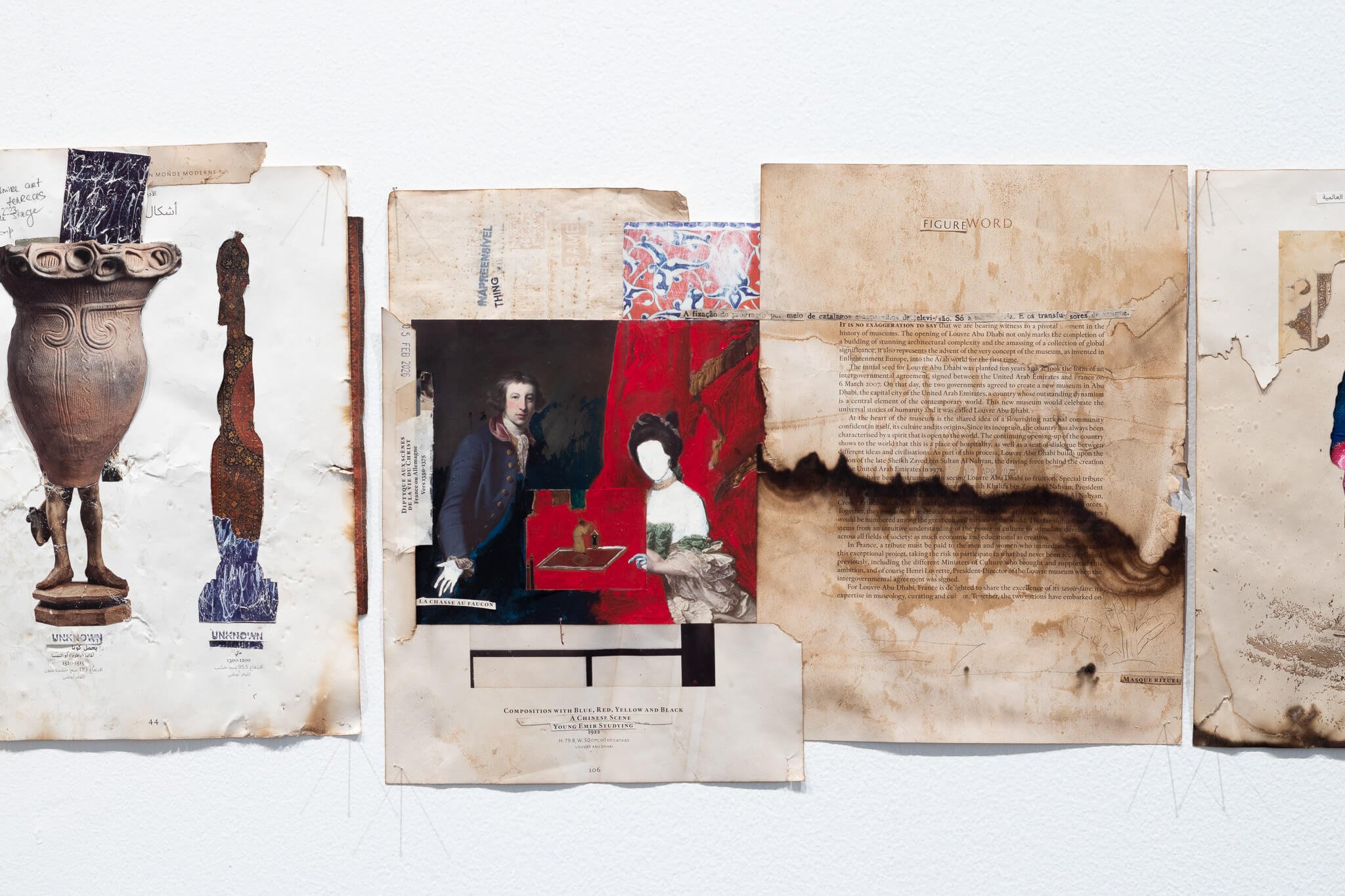
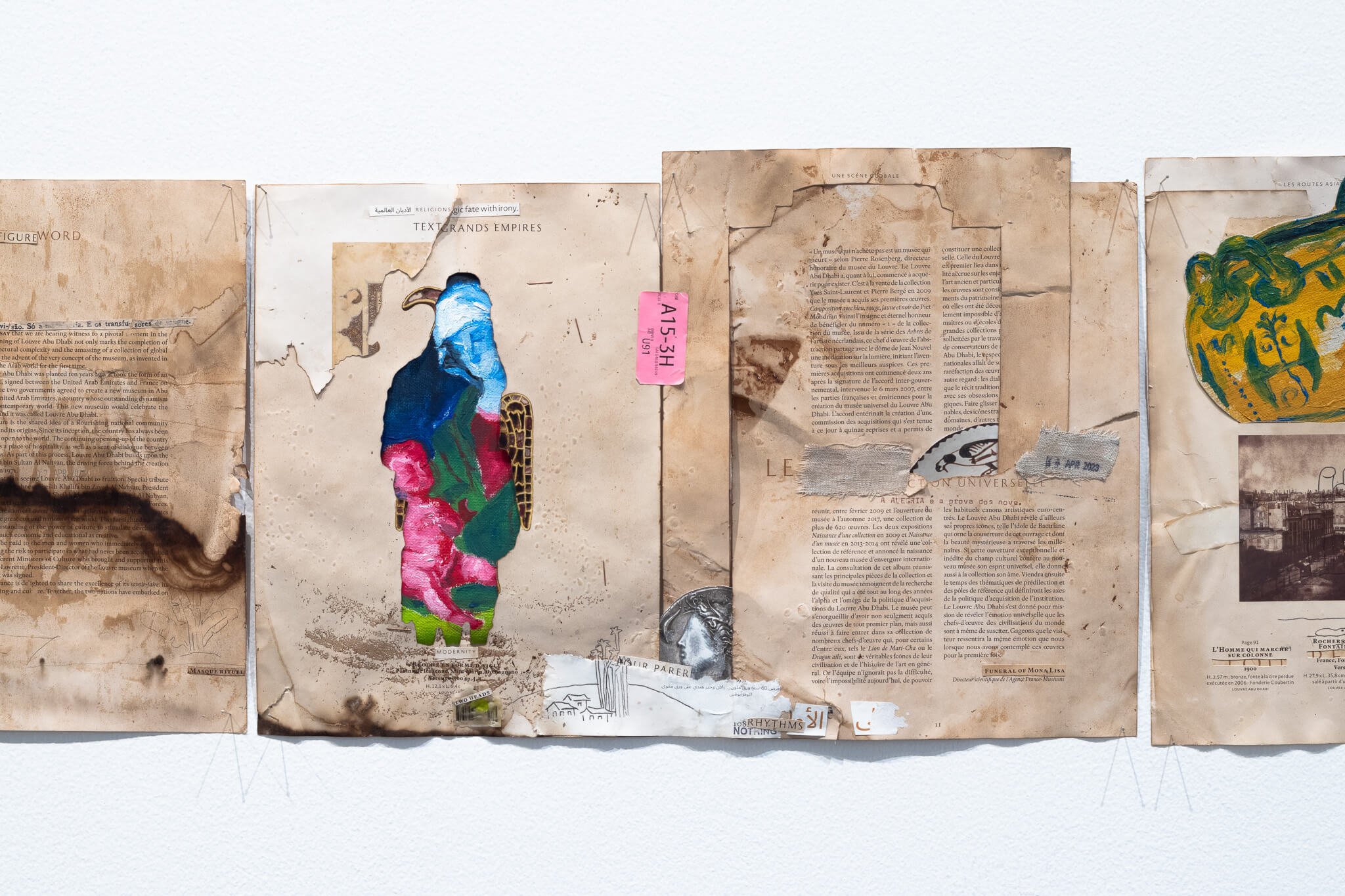
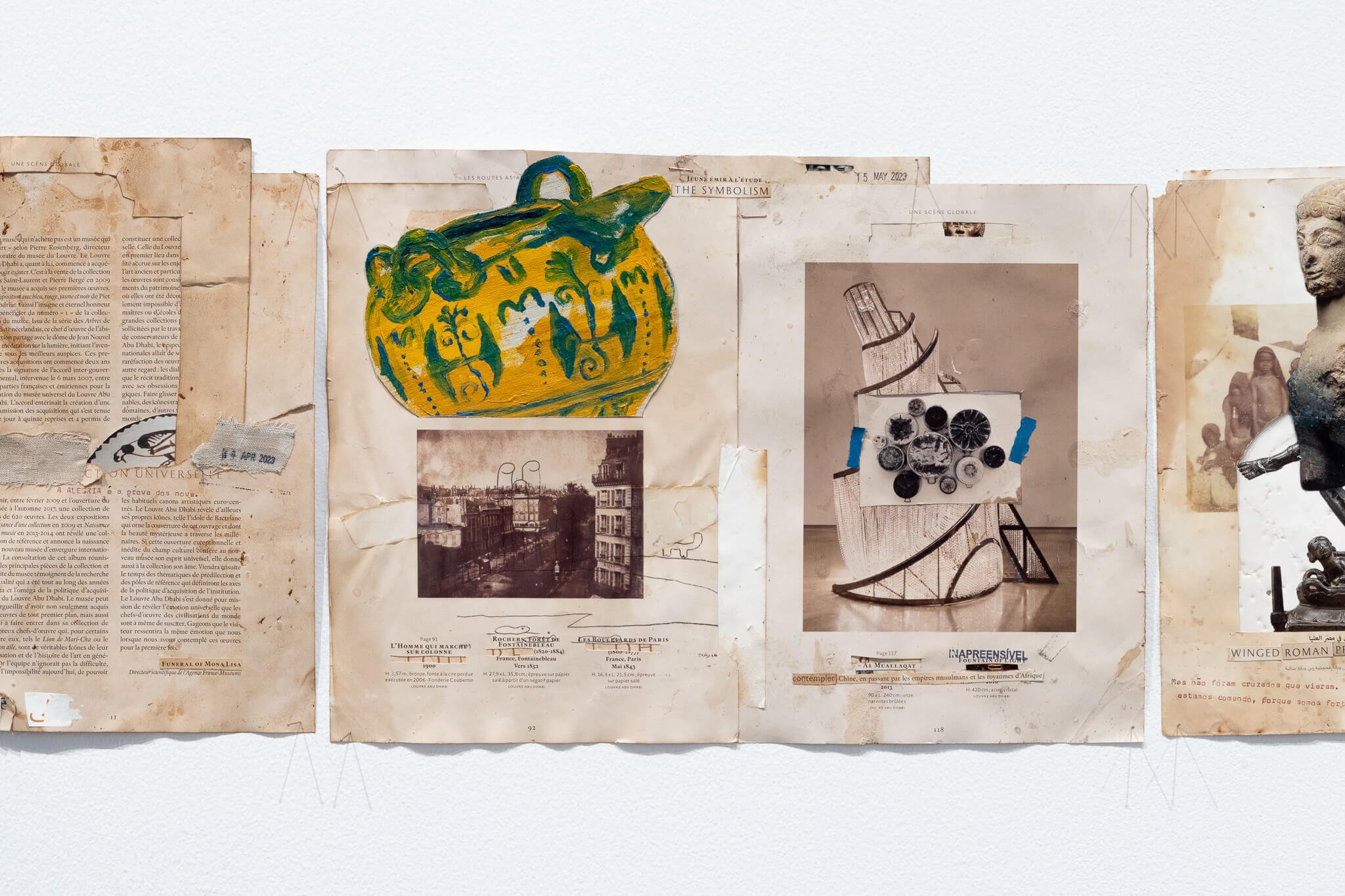
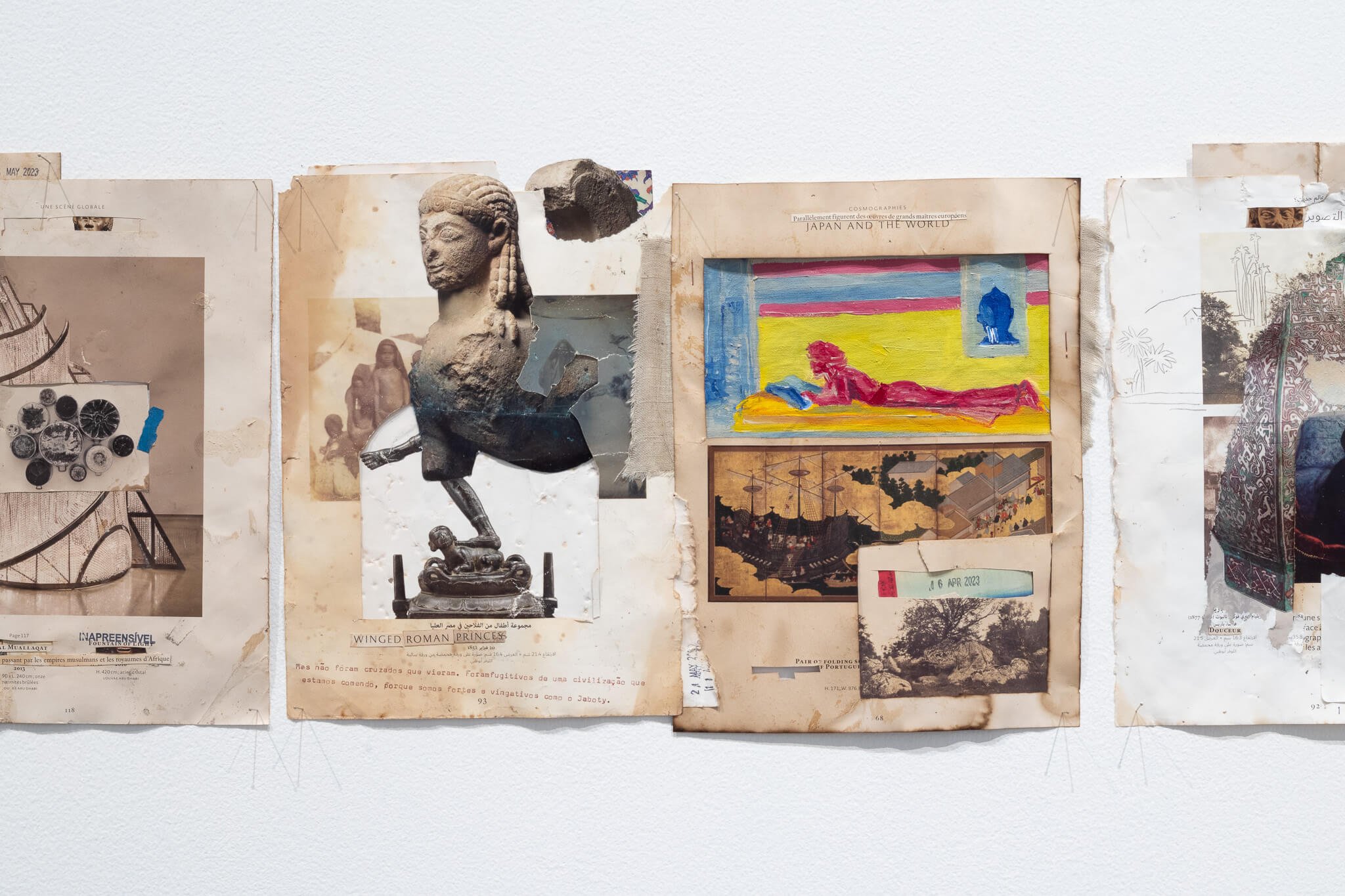
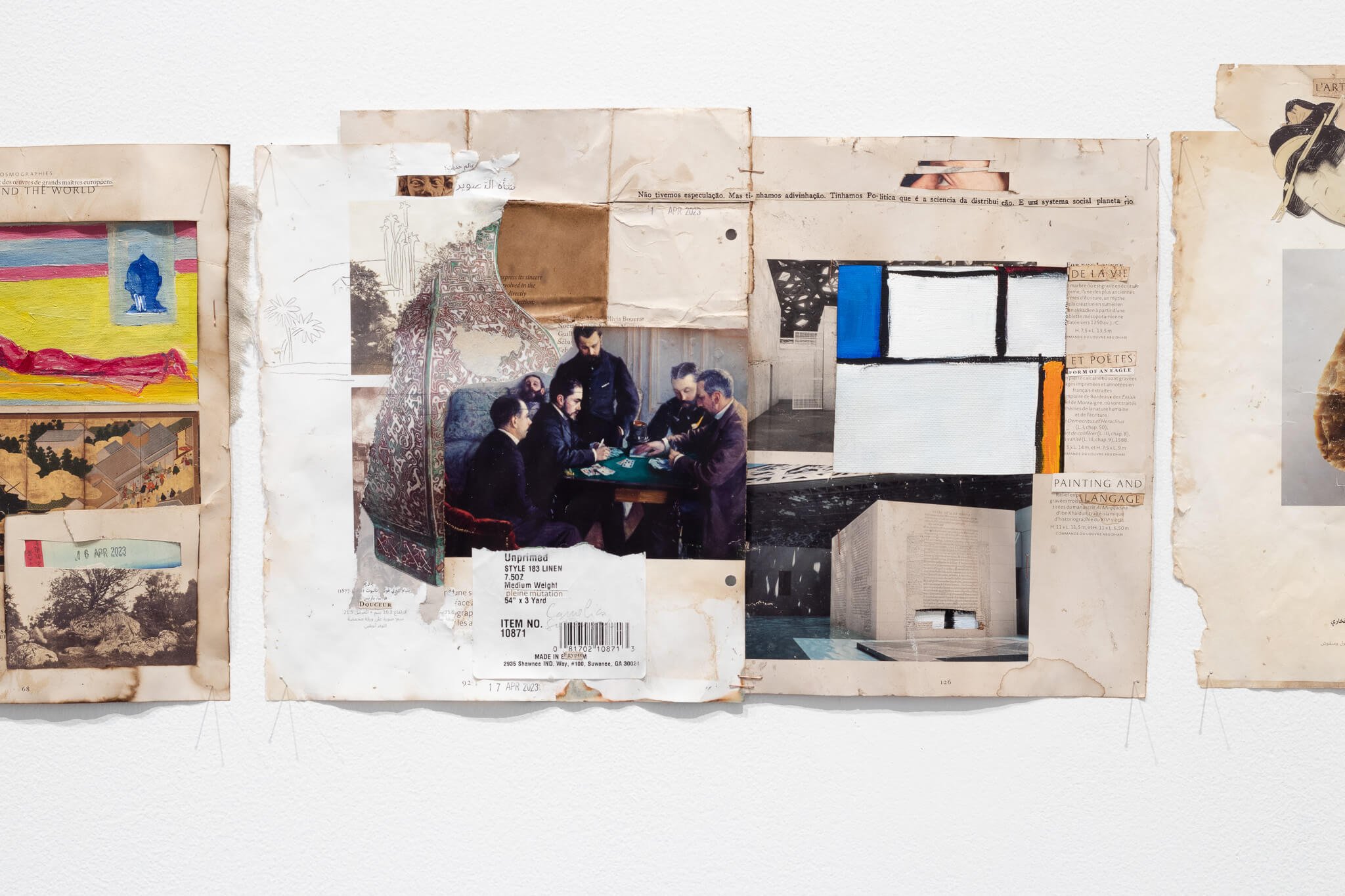
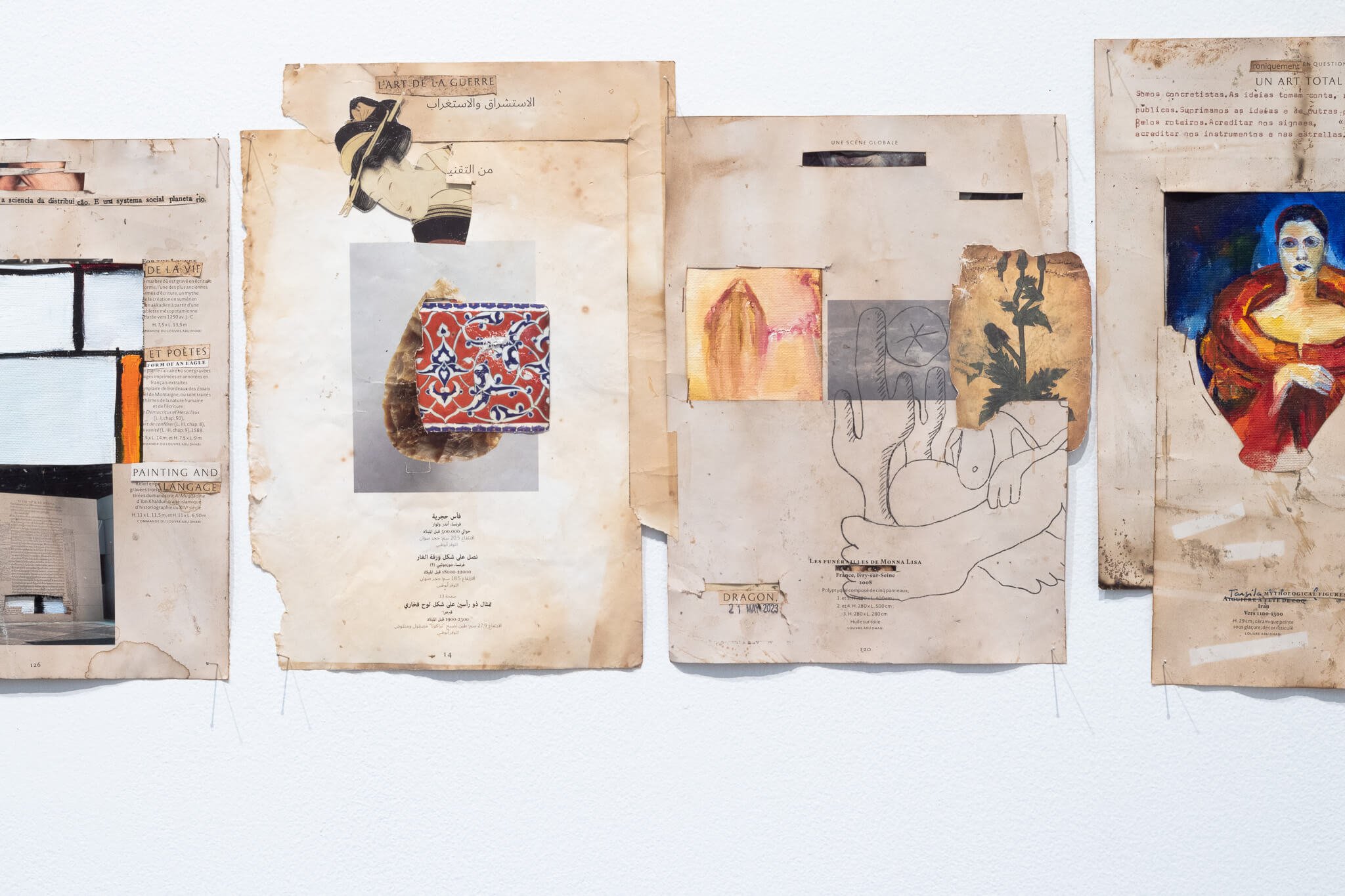
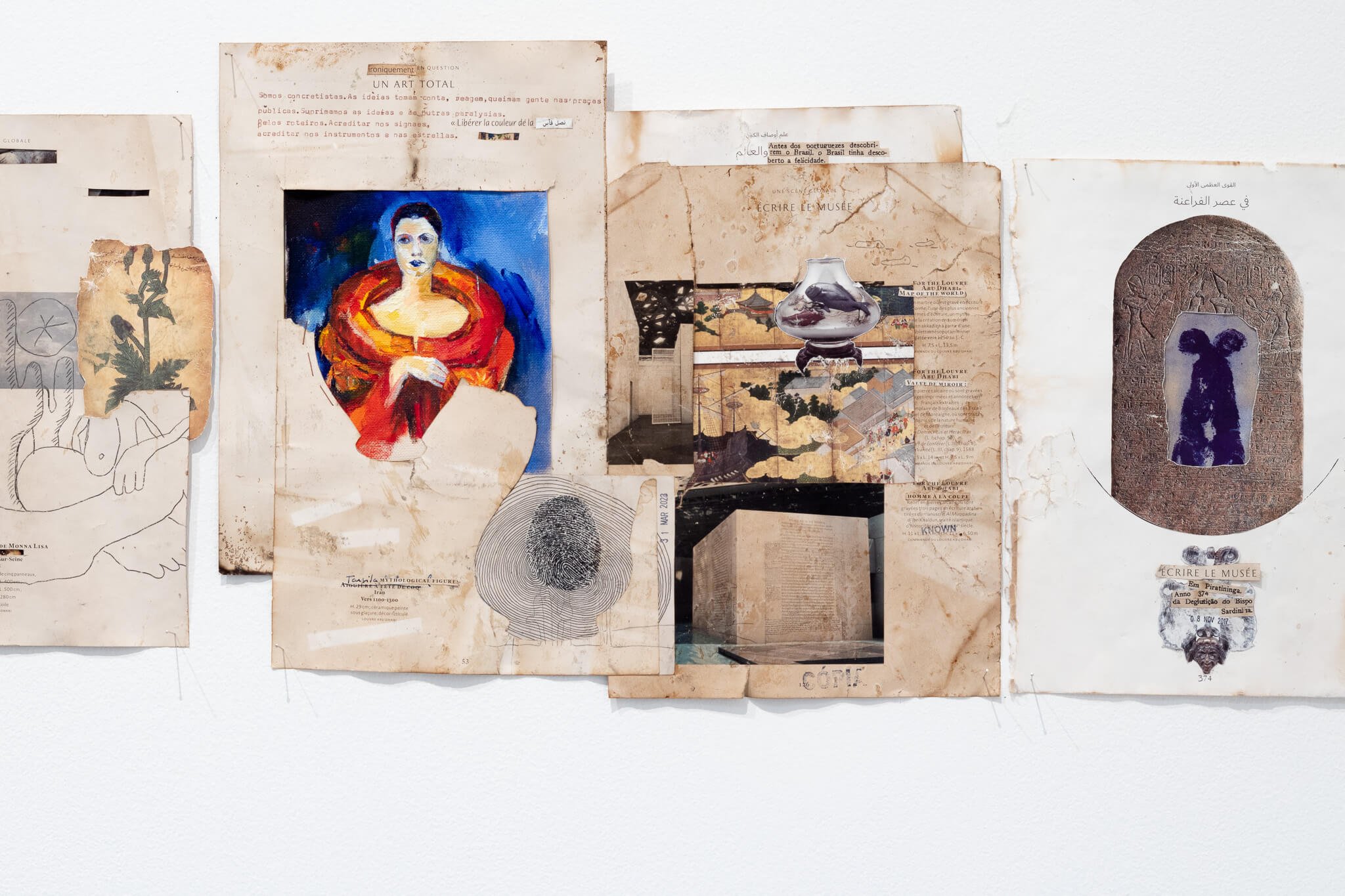
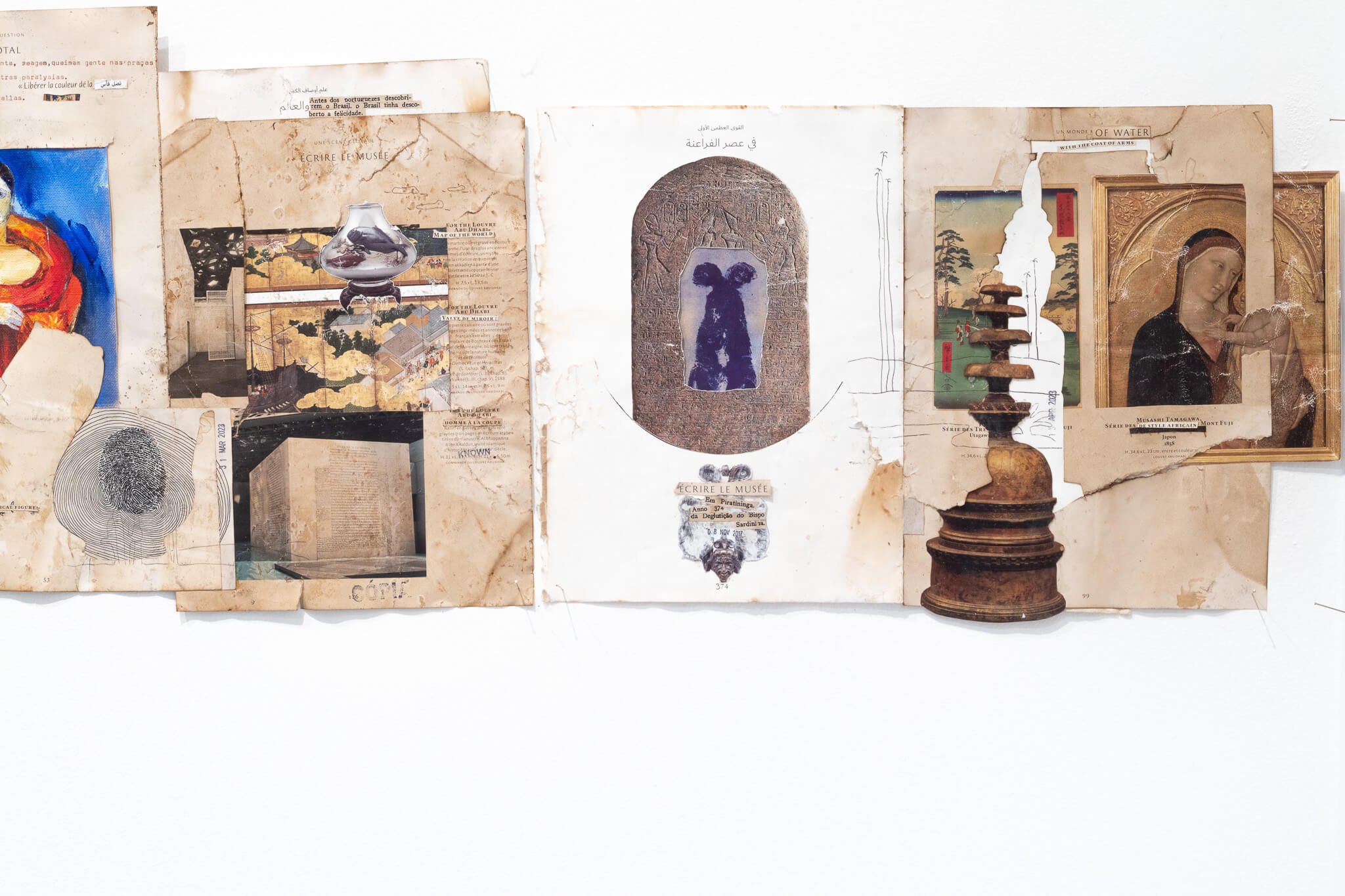

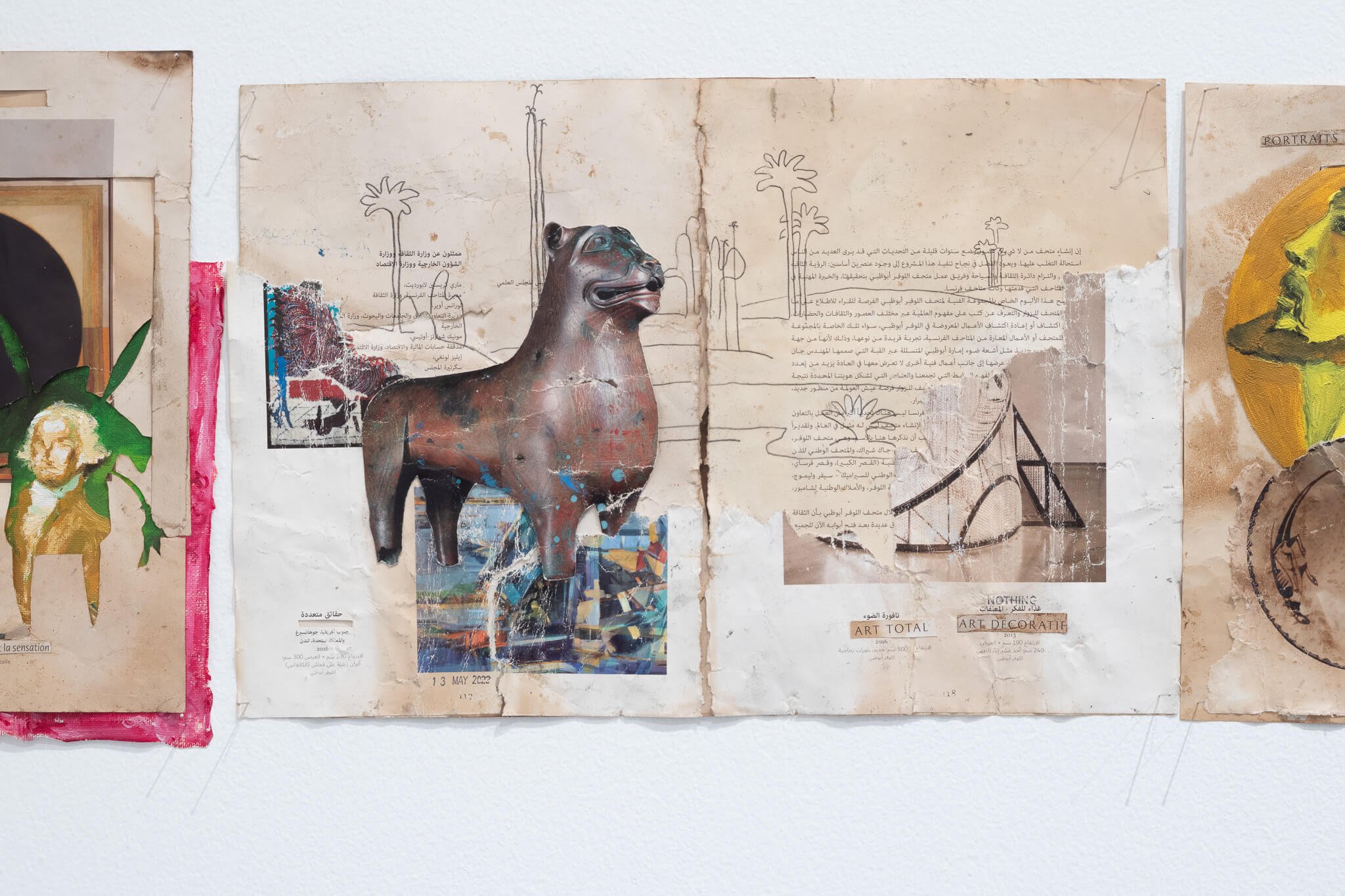
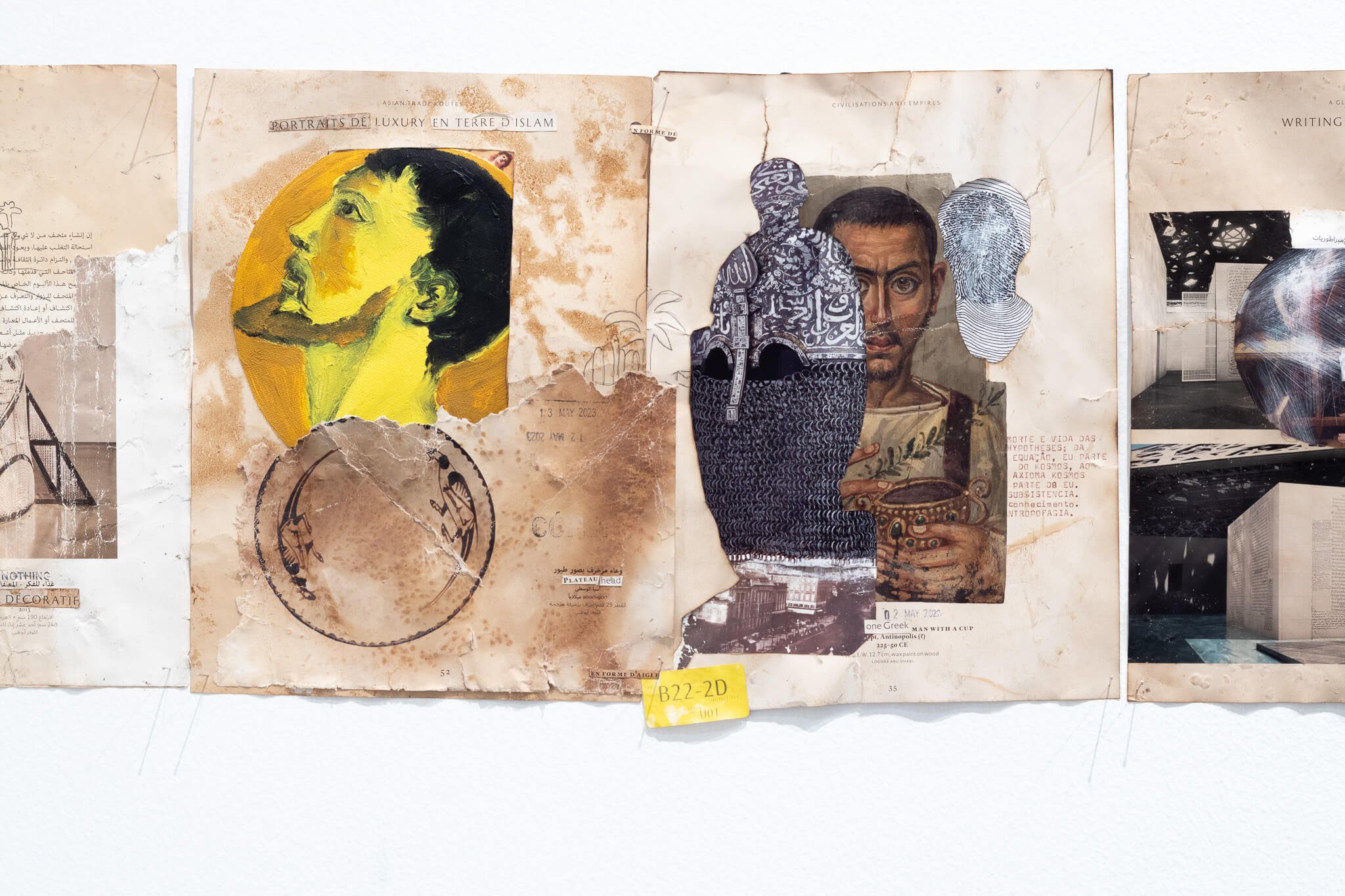
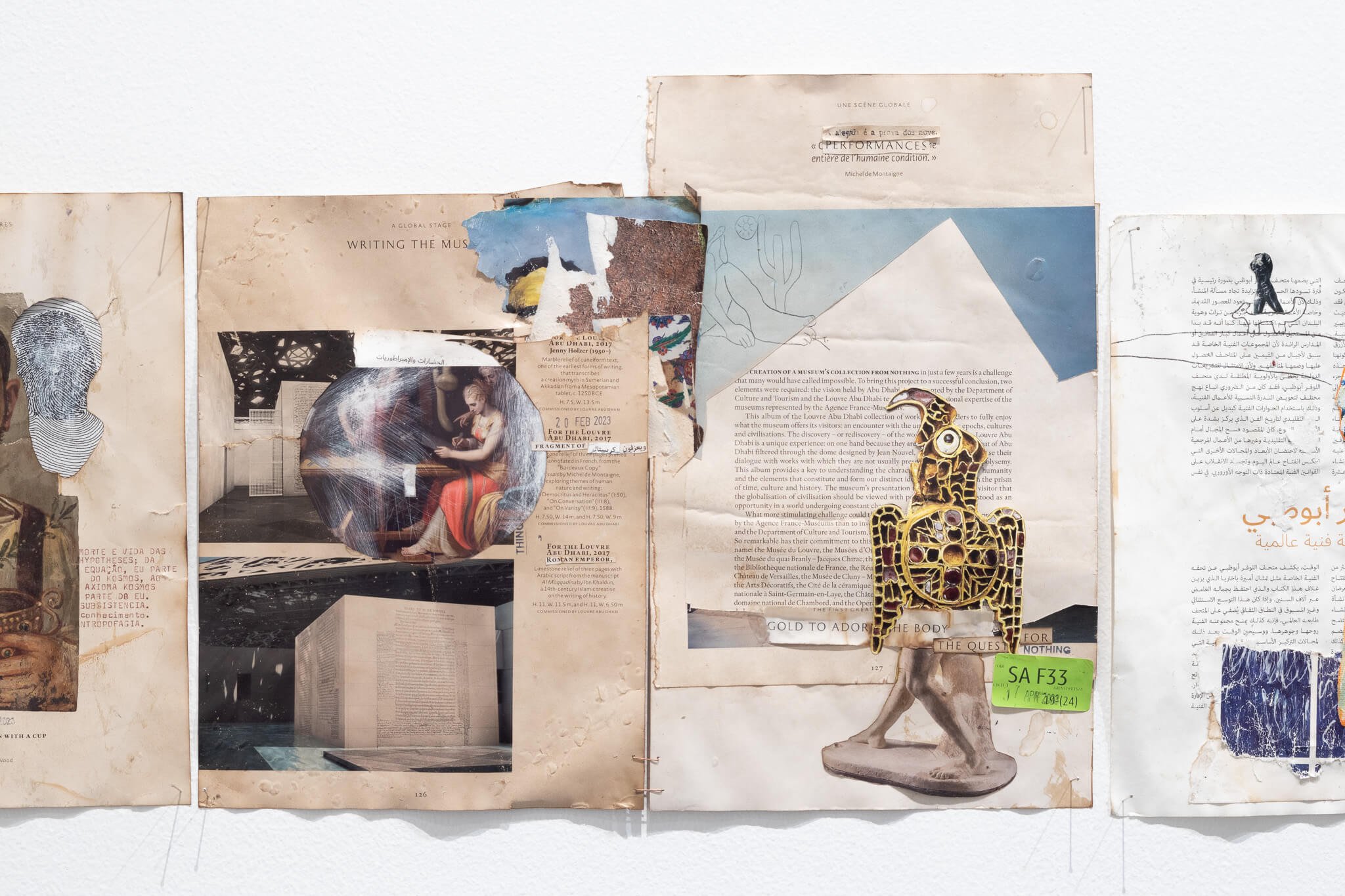

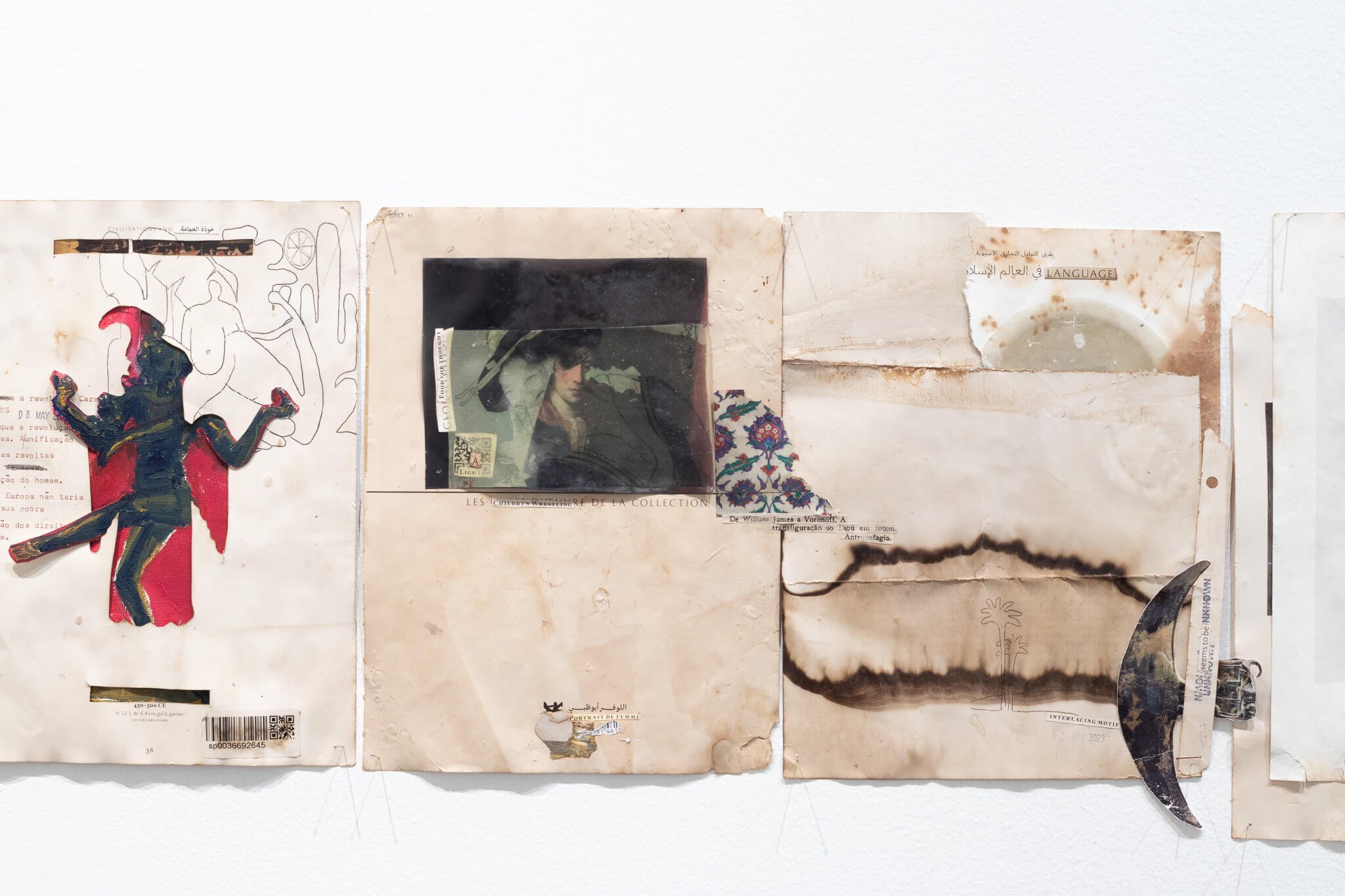
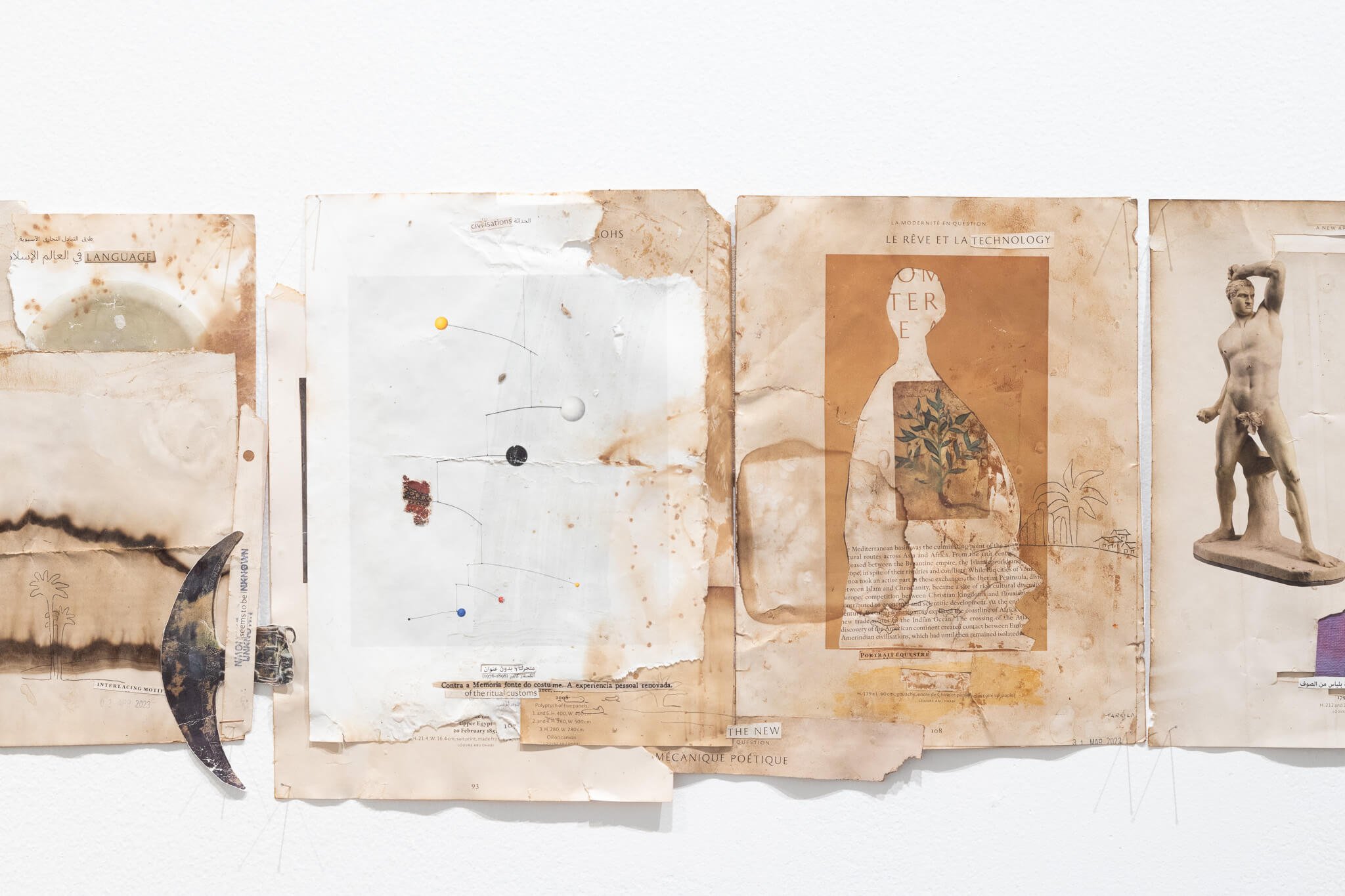
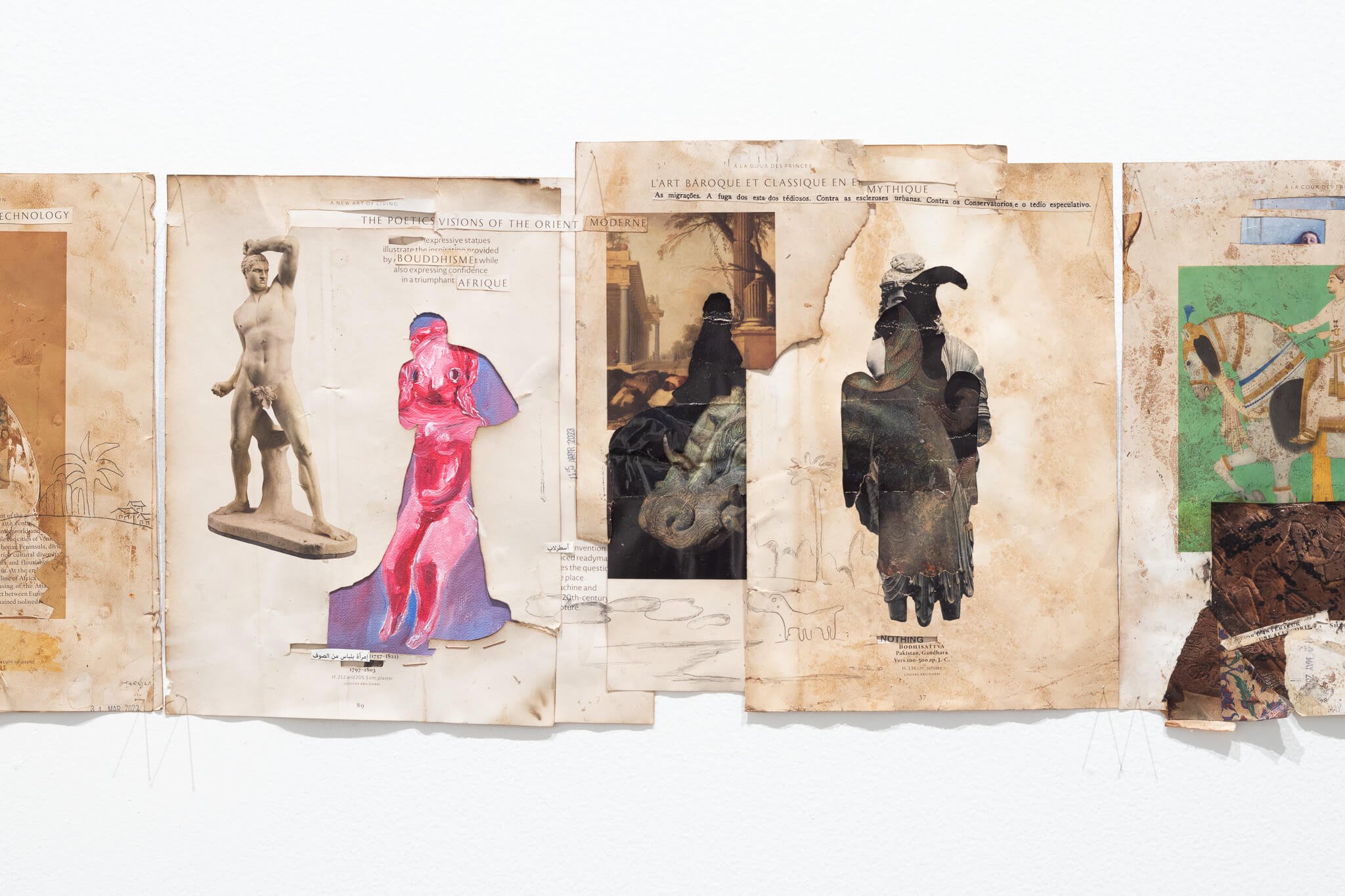
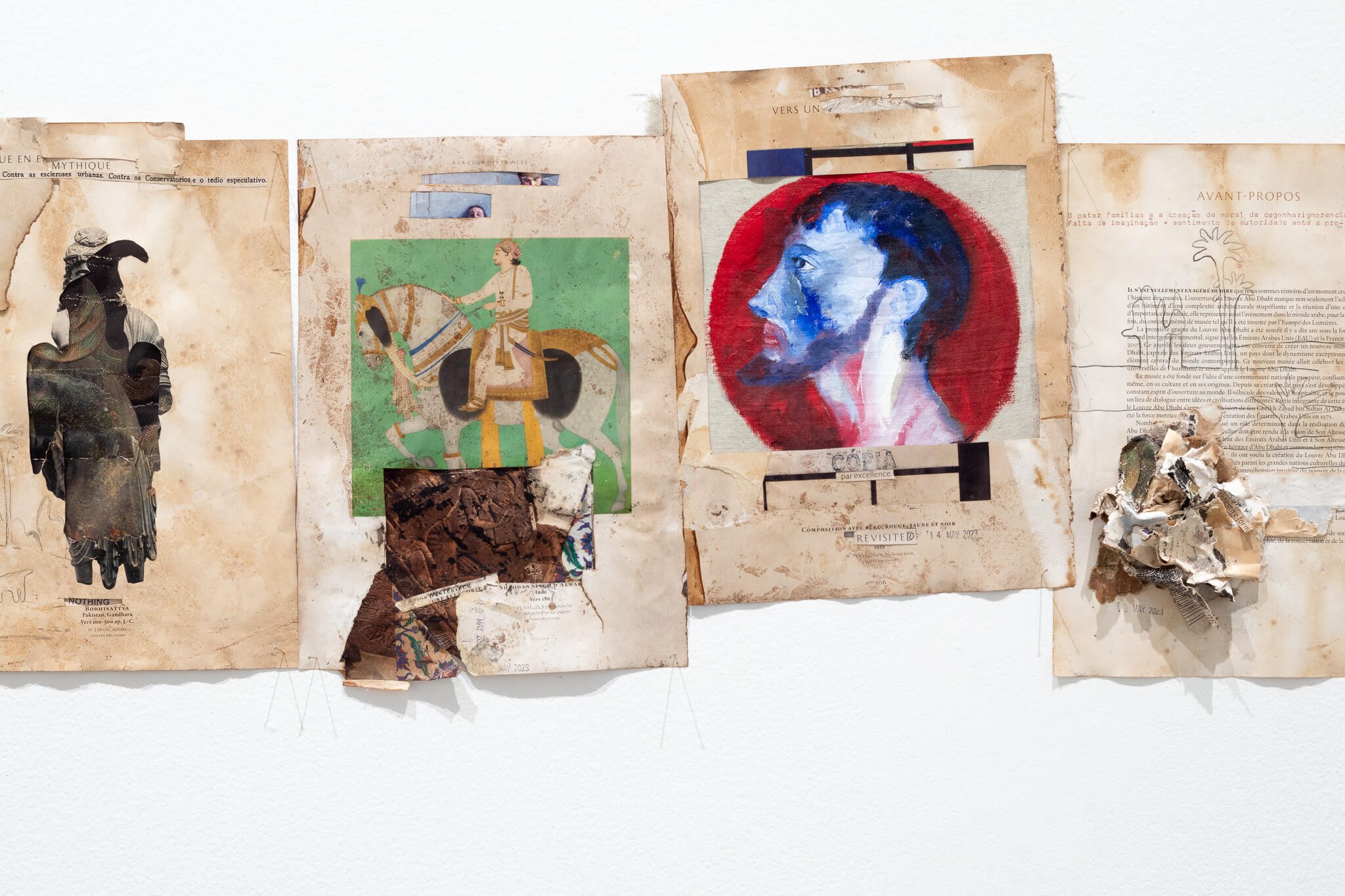
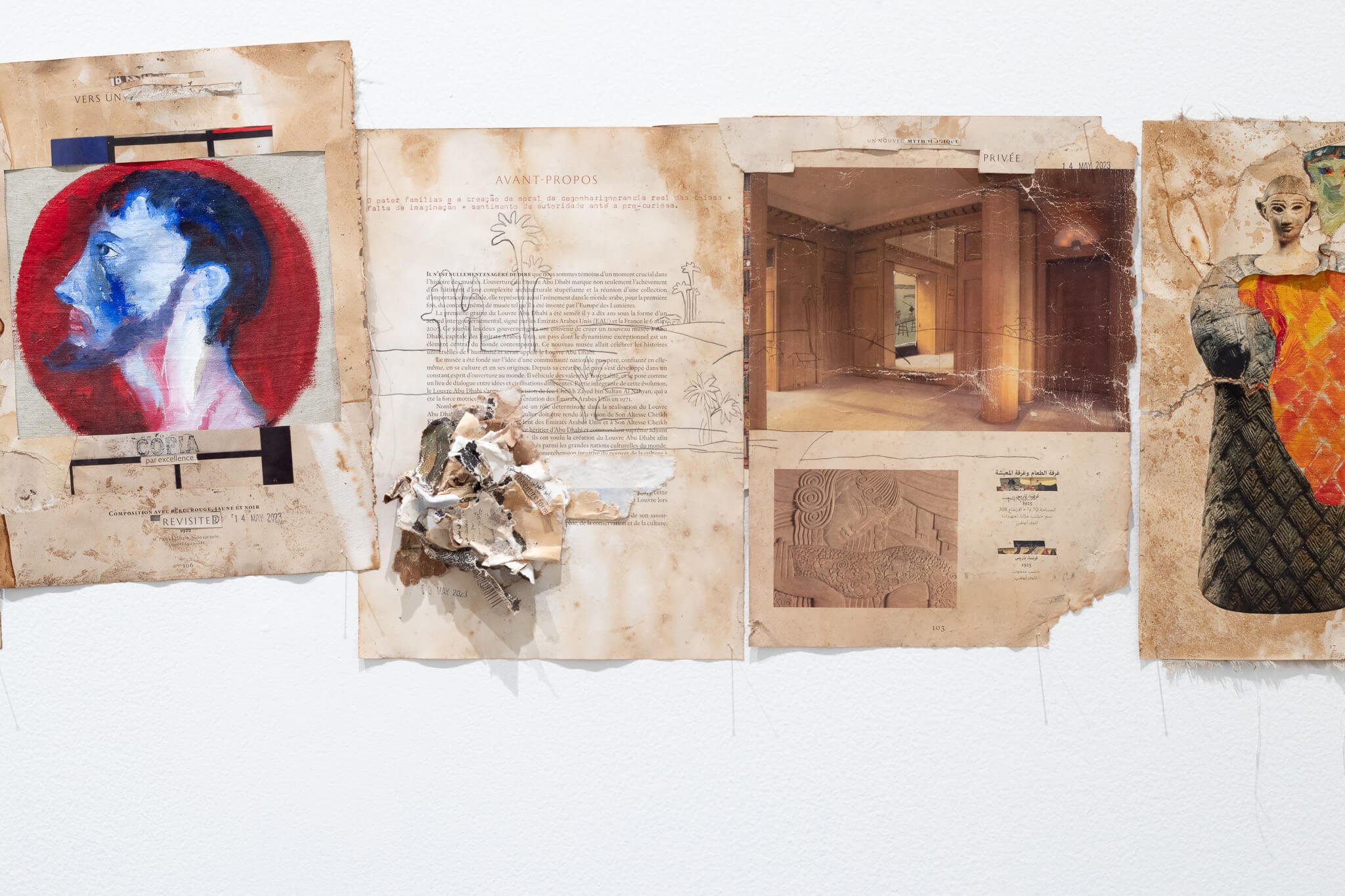
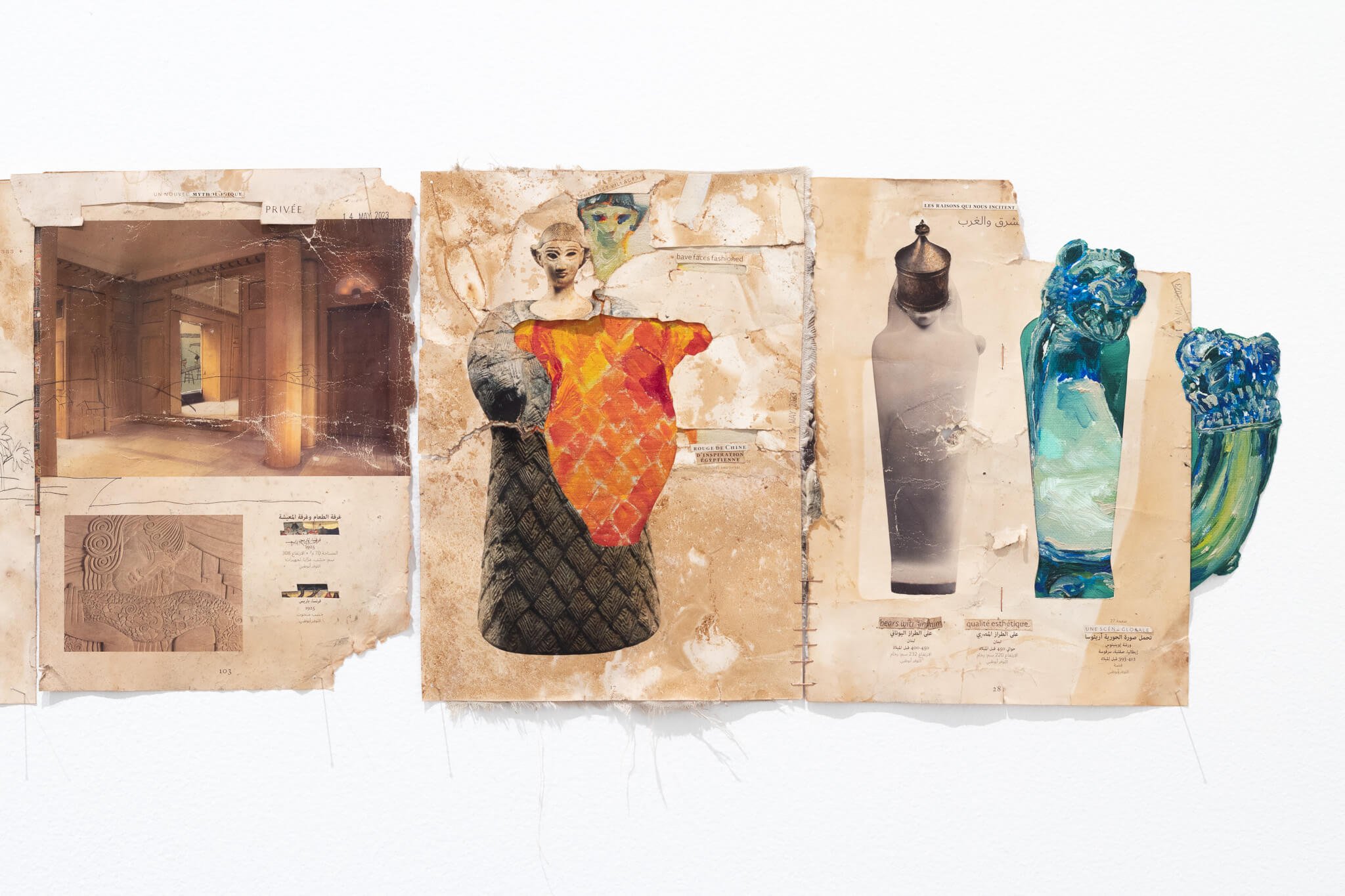
“Line of flight“, 2022-2023 Mixed media collage - 30x42 cm approximately (variable dimensions)
“Line of flight“ (2022-2023) is a mixed-media body of work comprising several cutouts made with Louvre Abu Dhabi catalogs as source material. English, French, and Arabic catalogs are dismantled page by page as a map or Atlas resembling a fractured and fictional timeline. Cut-out images and texts are aged with coffee, tea (trade goods that drove the colonization era), salt water, and sun. Archival elements—stamps, tapes, staples, labels, postal stamps, carbon paper drawings, typewritten phrases, and punch holes—create a fragmented pictorial composition, a new configuration, and a narrative that evokes memories across realms (objects, artworks, categories, descriptions, and aesthetics). Traces, marks, words, and images by the previously established Museum's hierarchies and themes are still recognizable, although the artist's names and nationalities are now lost. The piece's archival quality is enhanced by foreign elements that break its visual iconographic logic: bar codes, vivid oil painting copies of the collection masterpieces, carbon copy drawings from Brazilian modernist artist Tarsila do Amaral, and cutouts from the "Anthropophagic Manifesto" (1928).
Most of the time, cutting feels like an act of violence against the original catalog, which I then embellish with colorful oil paintings and stamps to disguise how we evaluate the museum's original artworks.
“ Tupy or not, Tupy. This is the question.” (2023) Oil, wax, collage on linen - 285 x 320 cm
I look for a place where the fields of color meet, juxtapose, dissolve, erase, and cease in order to produce a sense of disruption in the work plane similar to that of a collage.
“ Tupy or not, Tupy. This is the question.” (2023) - Details
"Tupi or not Tupi, that is the question" (2023) is a wax and oil painting that illustrates my anthropophagic desire to absorb and embrace the other, in this case, the desert, the ocean, and all civilizations in a universal museum. What role does Tarsila do Amaral play in the painting? I want to imagine the Louvre Abu Dhabi territory being devoured by Tarsila do Amaral's figures and the museum's objects, which are now entities, out of the galleries, out of the catalog pages, claiming their territory, echoing their shapes, identities, and dreams, similar to Tarsila's Antropophagic landscapes where strange animals and minimalist plants populate a fictional Brazil. It is a space that has been invaded, cannibalized, and occupied. In turn, I cannibalize Tarsila as a painter; I absorb her, reinvent her, as if it were possible to absorb her talent through my “brasilidade” and place “our” work in the canon of a universal museum.
All structures are unstable"(2023), wax, paper, linen 75 x 100 x 200 cm
"All structures are unstable"(2023) is a sculpture in which a thick beeswax block holds upright the pages of the Louvre Abu Dhabi catalogs. This structure is placed over a table covered in a linen tablecloth in which wax drippings flow toward the floor. The base "holds" cutouts from the catalog that have been transformed into walls; light penetrates their cuts and empty spaces, creating shadows and the illusion of a maquette or maze. The "walls" can be viewed as negative spaces from which images are extracted nearly completely. Due to previous processing in coffee, tea, and saltwater baths, they are relatively weak and have linen mendings, holes, and incisions. Before being attached to the base, the pages were dipped in several coats of beeswax to make them stand upright. I made the base by melting 30 kg of beeswax into rectangular molds, letting them harden, setting them over the linen, and then pouring beeswax again over the edges toward the floor, covering almost the entire surface with drippings. It feels like an offering table or “altar”, but whose prayer remains or “candle’s drips” originate from the structure itself, dissolving and encasing the whole structure, forming multiple wax layers, and producing a golden and fragrant sculpture resembling an embalmed archaeological find.
For many years, my fascination with bees and wax led me to learn about beekeeping. Gradually, I began to incorporate them into my artwork to create transparency and a layering effect, taking advantage of the wax's memory quality to imprint and scratch marks.
As my first attempt at making a wax sculpture, I intended to delve deeper into the material’s quality of memory and plasticity. While standing, the wax-embalmed paper walls and their foundation are unstable, contracting, and expanding, revealing impressions, gaps, and movements. The work embodies the flow of the wax melting, its beautiful resilience, and its adaptability, resembling life’s fragility within a paradoxical time. While exploring the material's freedom, resistance, and possibilities, many childhood memories came up, and I felt once again like building castles, but with wax instead of sand.
Encounter Museum at 421 Arts Campus, Abu Dhabi, United Arab Emirates

